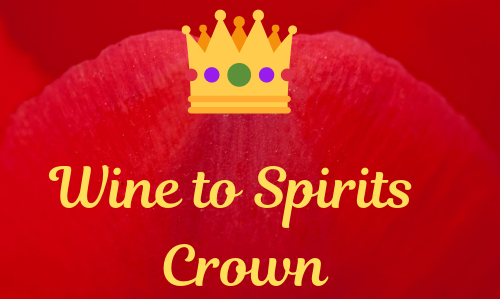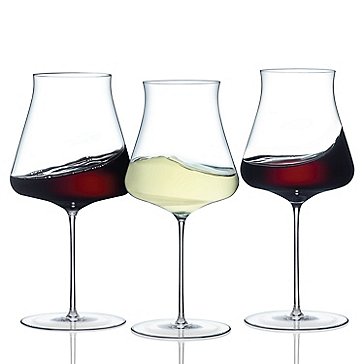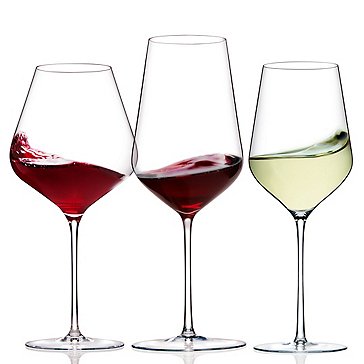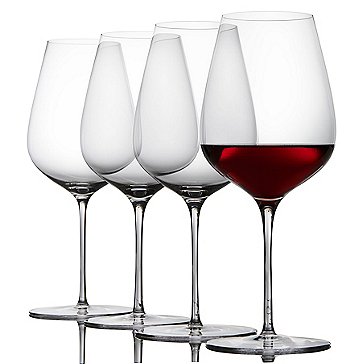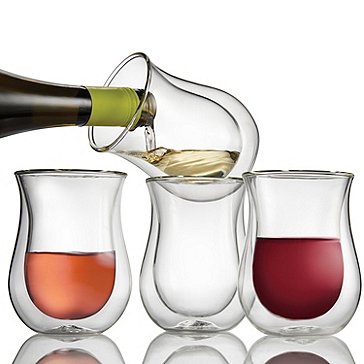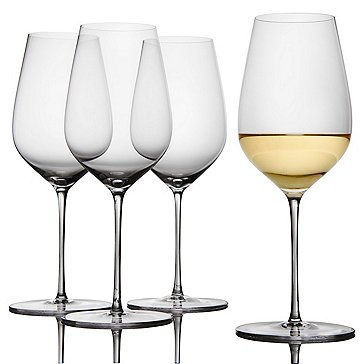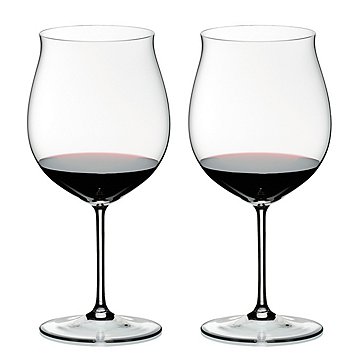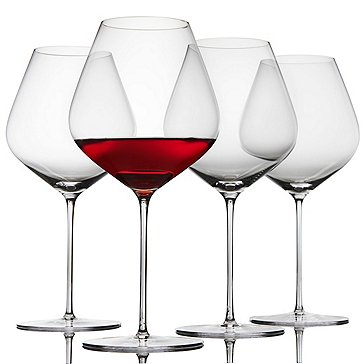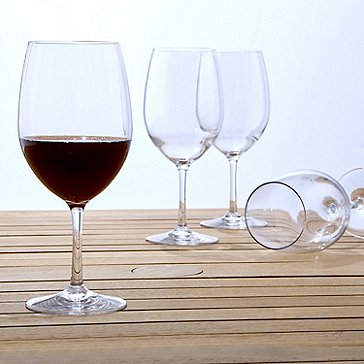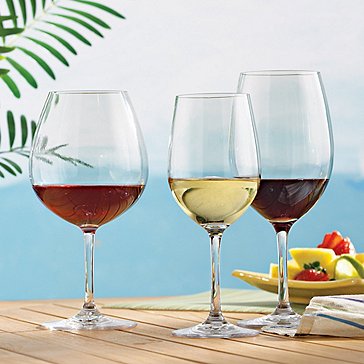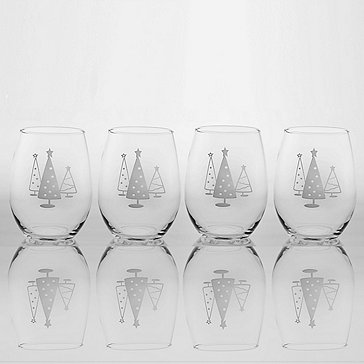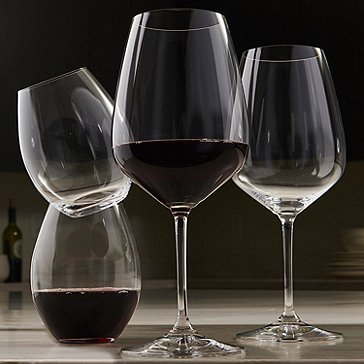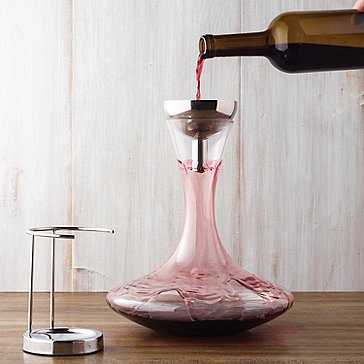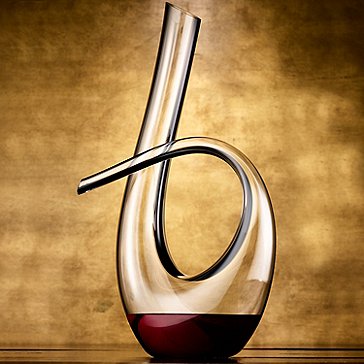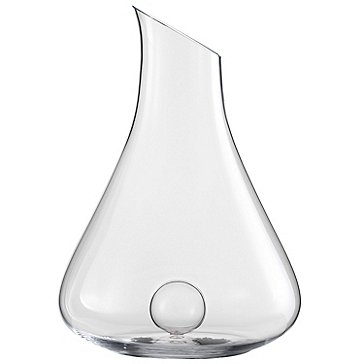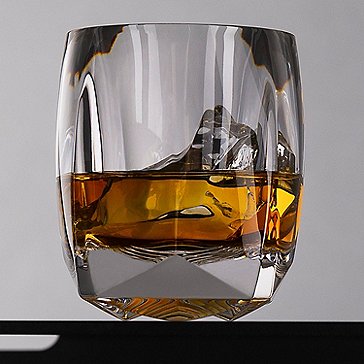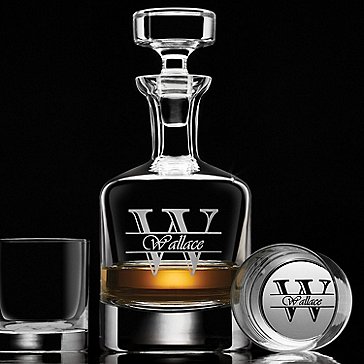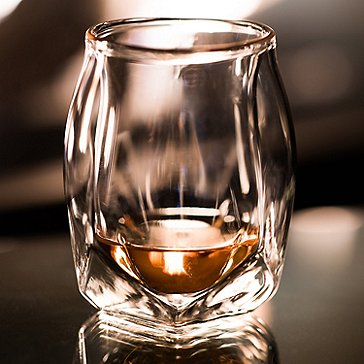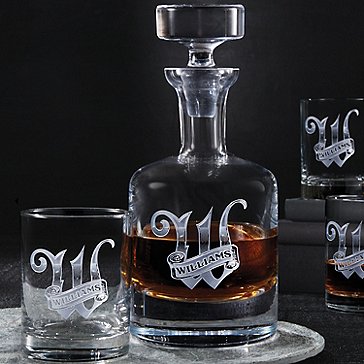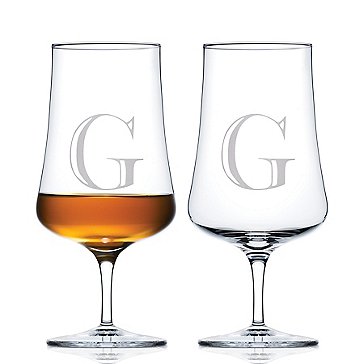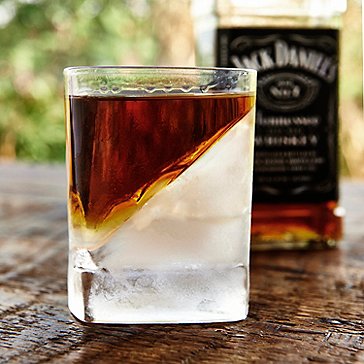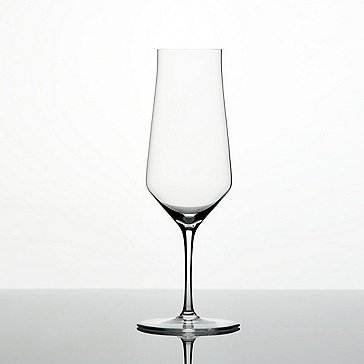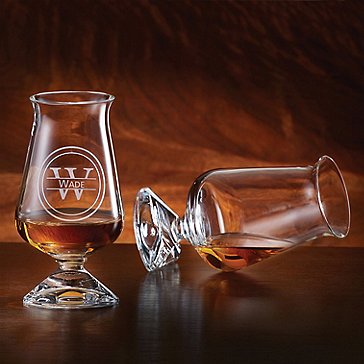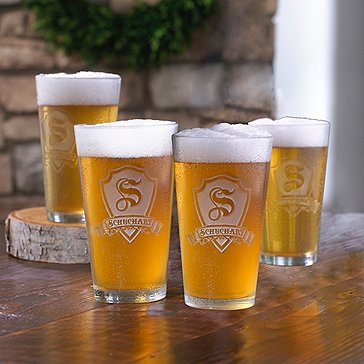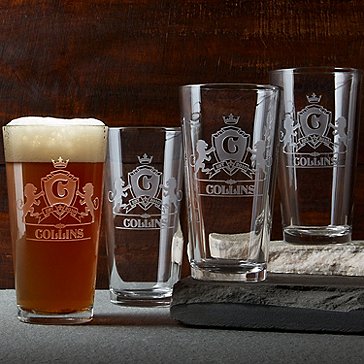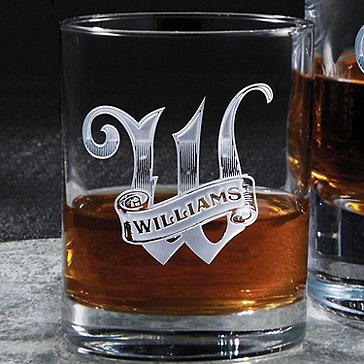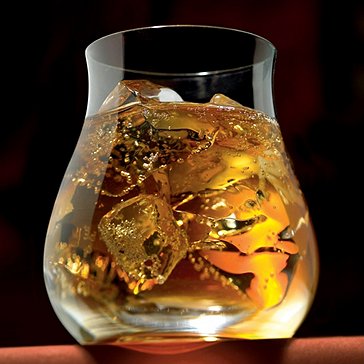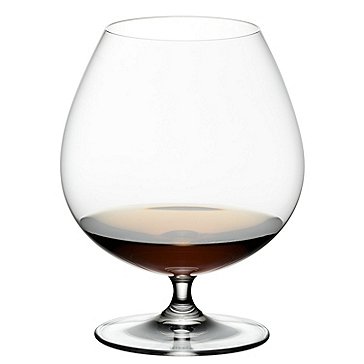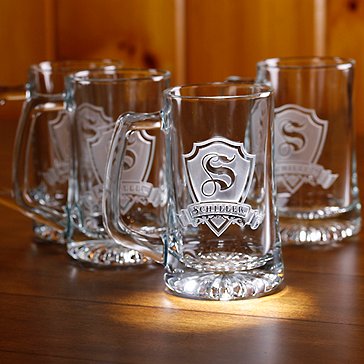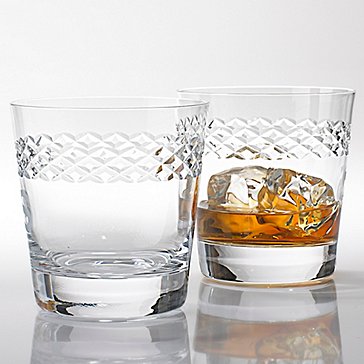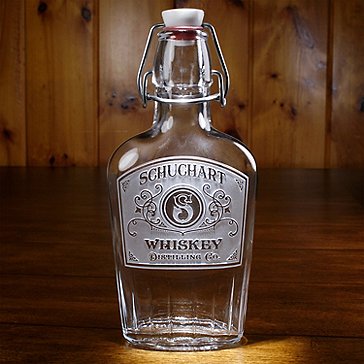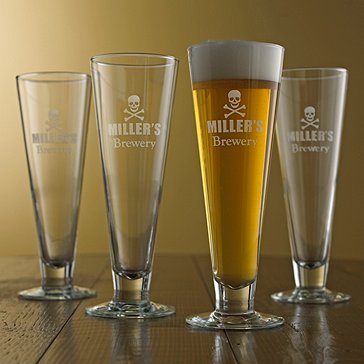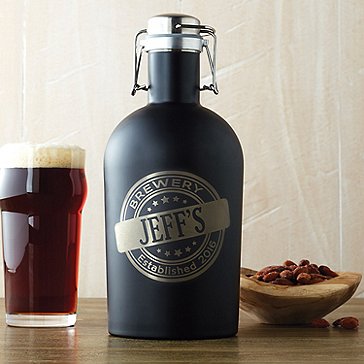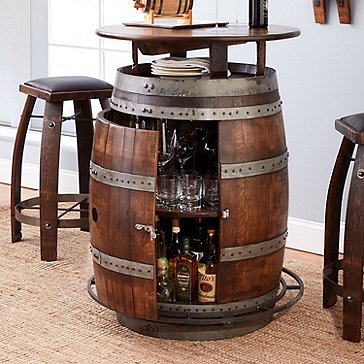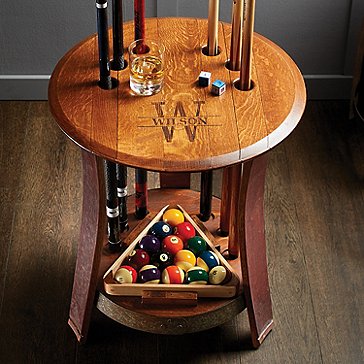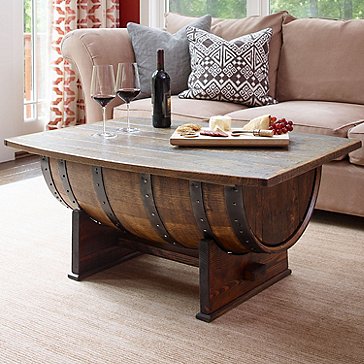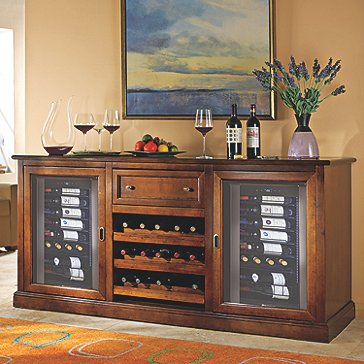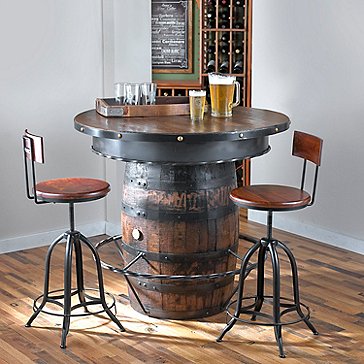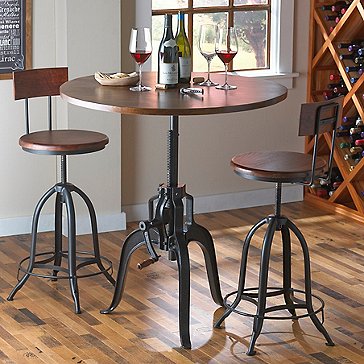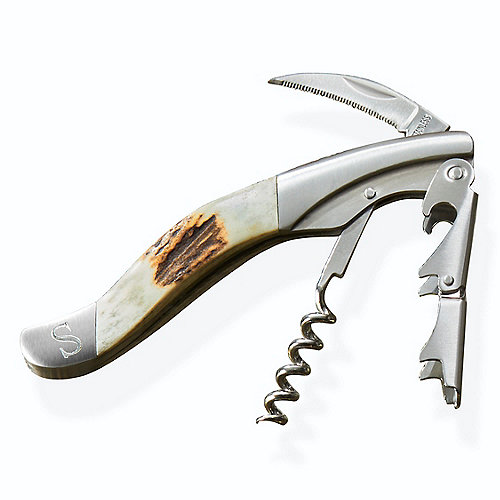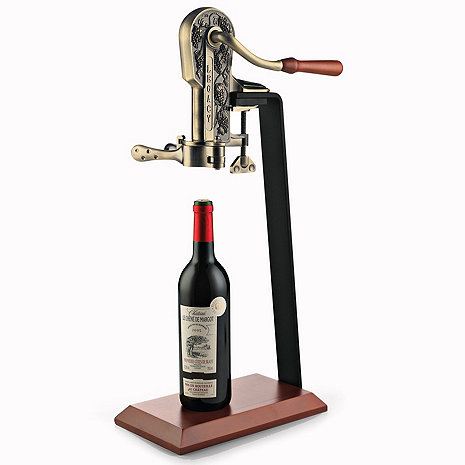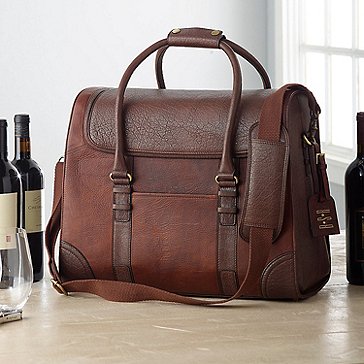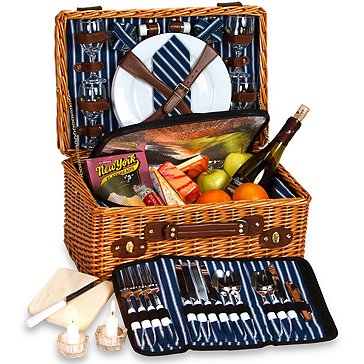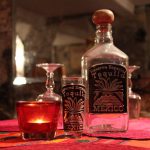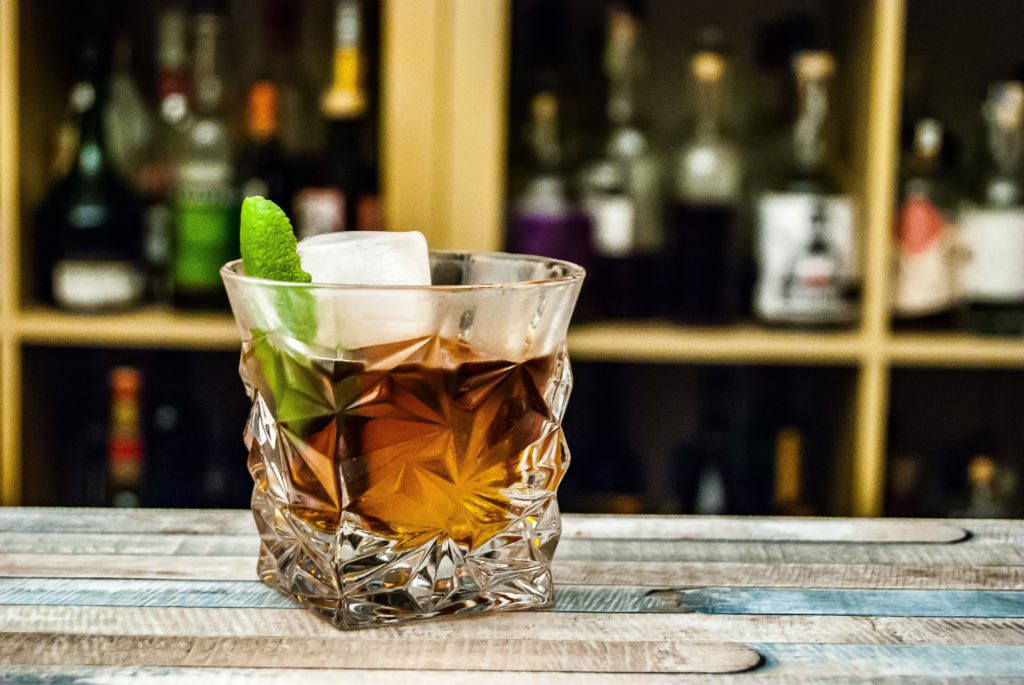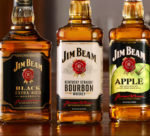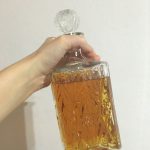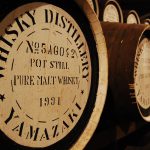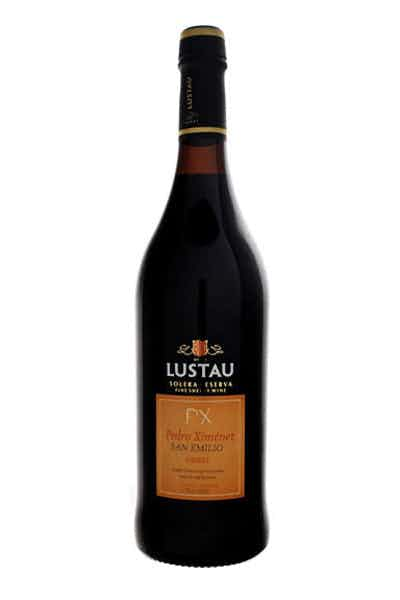With the available Wines of the World you have the unprecedented opportunity to buy wines online and be a true wine lover in a wine lover’s garden of pleasure. Whether you are looking for a world-class wine to serve at your dinner of the year or just a very good table wine to go with your pizza. There are selections available for every connoisseur including whites, reds, rose and sparkling wine. Not just the Old World selections but a fantastic world array from exclusive wine regions in both North and South Americas, Australia, New Zealand and South Africa
 Joe W
Joe W
WORLD OF BEER
WORLD OF BEER
Beer is one of the oldest beverages produced and the most widely consumed of alcoholic drinks in the world. It is produced by the brewing and fermentation of starches, derived from cereal grain Beer is most commonly made from malted barley, though wheat, maize (corn), rice, and oats are also used. During the brewing process, fermentation of the starch sugars in the wort produces ethanol and carbonation in the resulting beer. Most modern beer is brewed with hops, which add bitterness and other flavors and act as a natural preservative and stabilizing agent. Other flavoring agents such as gruit, herbs, or fruits may be included or used instead of hops.
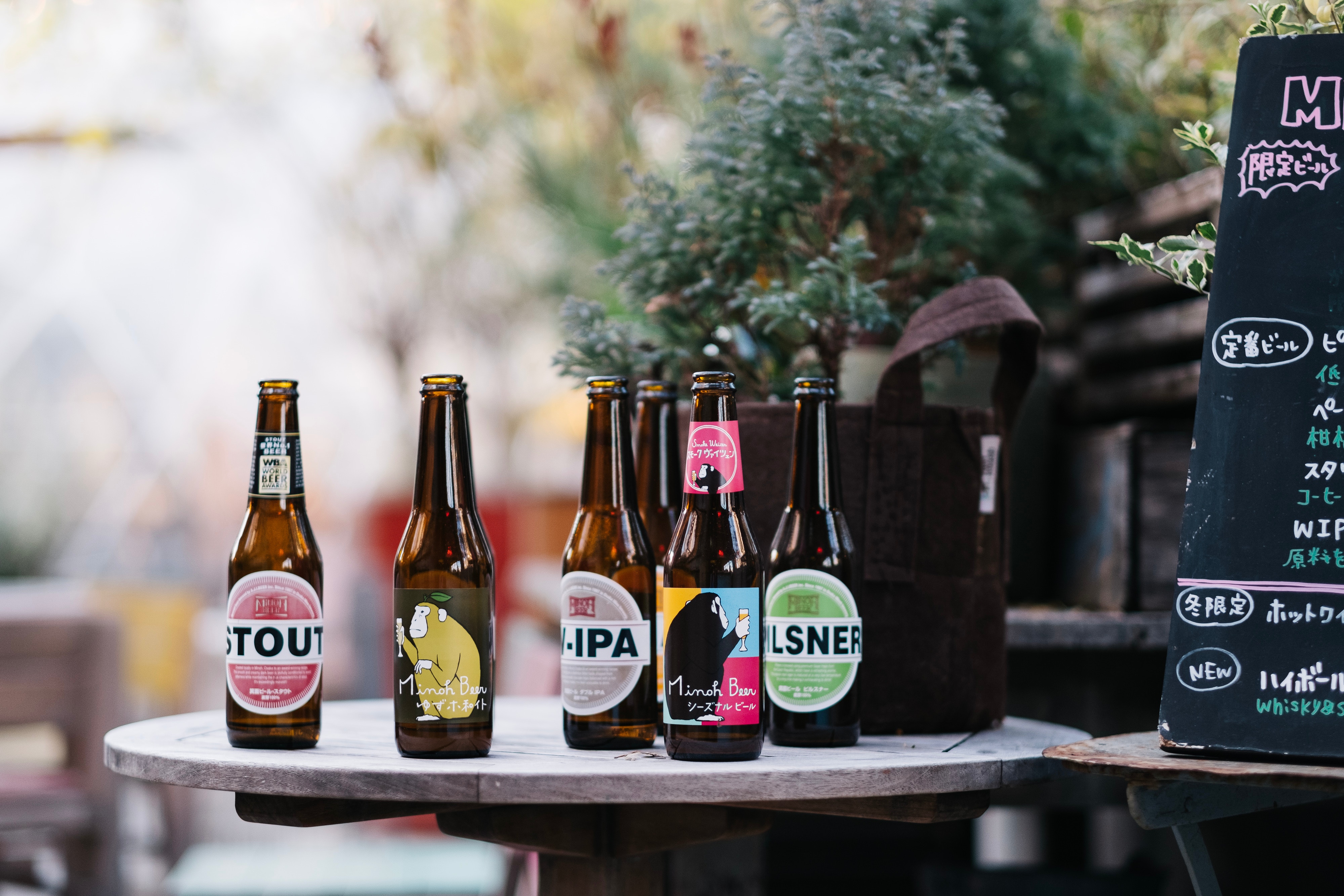
LAGER
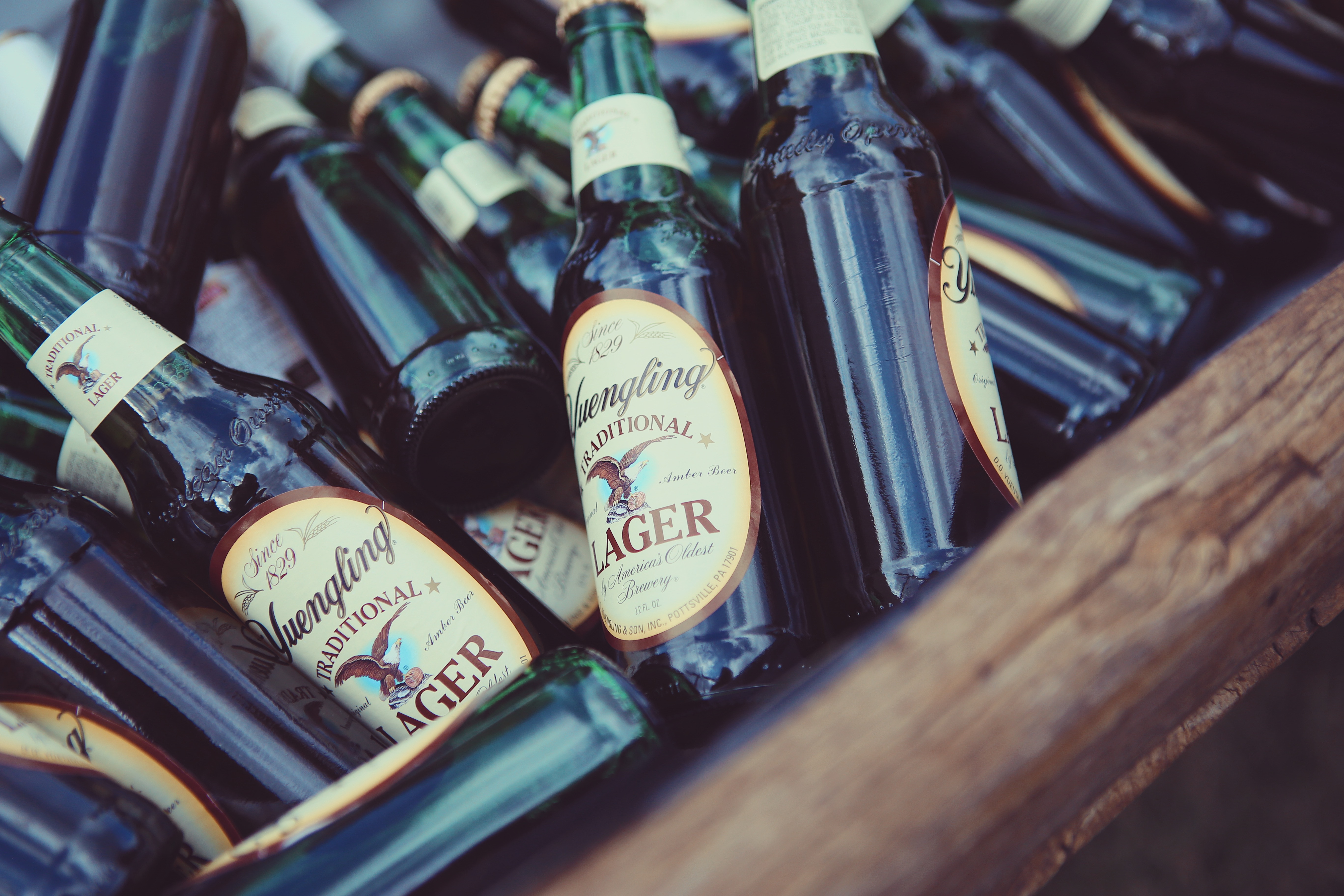
In the world of beer, Lager is a type of beer fermented at low temperatures. Most lagers are distinguished by the use of the Saccharomyces pastorianus yeast, a “bottom-fermenting” yeast that also ferments at relatively cold temperatures. There are many beers that fall under the lager type, these being categorized by their color, being pale, amber or dark. Pale lager is the most widely consumed and commercially available style of beer. Well-known brands include Budweiser, Miller, Jarlsberg, Heineken, Stella Artois, Carling and many more.
ALE
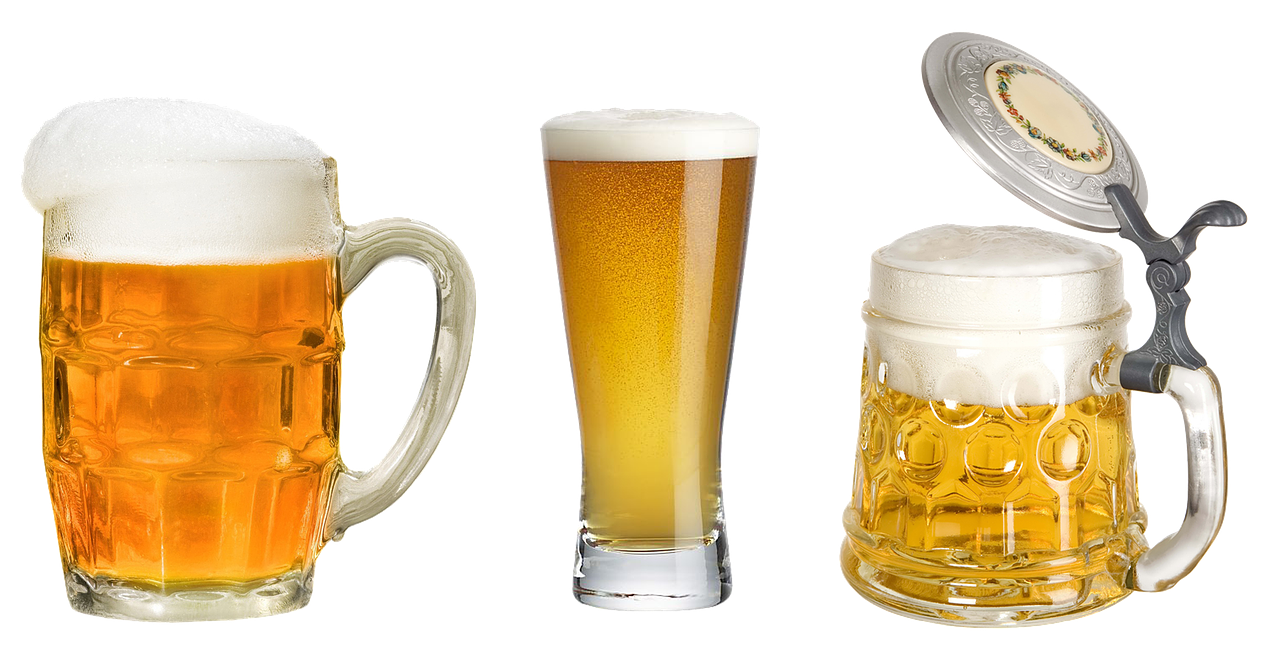
Unlike lagers, with yeast that flourish at lower temperature and ferment from the bottom up producing clean golden beers, Ale yeast metabolizes at a higher temperature and ferments from the top down and makes fuller, darker beers.
Amber Ale
Ambers range from rosy gold to deep mahogany. Rich, semi-sweet malt dominates the flavor and the aroma is redolent of ripe fruit. Ambers can be complex with a malty or caramel flavor or a sweet, bitter, fruity or hoppy.
Belgian Ales
Belgian Ales encompass a wide variety of styles for you to taste included Belgian Blonde Ale, Belgian Strong Pale Ale, Belgian Strong Dark Ale, Belgian Pale Ale, Belgian Abbey Ale. While they can vary in color, strength and flavor, Belgian Ales are typically a mild beer with varying levels of fruit notes.
Belgian Blondes
Belgian Blonde Ales are a product of post-war celebration. The nation celebrated the triumph of the liberation of Western Europe by doing what they do best: Inventing a super-strong ale that’s light on grain and heavy on bitterness.
Abbey Ales
These were developed by monks in Belgium in the microbreweries in the Benedictine chapels in the tradition of a Belgium Ale. Eighteen of these microbreweries exist today producing these exceptional Ales. The Union of Belgian Brewers certifies Abbey Beers and Ales now to prove their authenticity for availability to the world of beers.
Cider
This refreshing beverage, made from fermented apple juice, has recently become very popular. Much like wine, the flavor can range from dry to sweet depending on the variety. Based on its broad appeal, hard cider is one of the most popular alcoholic drinks in the world.
Dry cider — offers a profound acidity and with a lesser body with less than 0.5 percent residual sugar.
Off-dry cider — offers slightly more body and a smoother than dry cider with 1 to 2 percent residual sugar.
Semi-dry and semi-sweet cider — any ciders above 2 percent residual sugar fall into this category with significant apple flavors, a good body and expert blending.
Farmhouse cider — natural cider with a down to earth flavor profile fermented with wild yeast for higher alcohol by volume.
IPA Beer
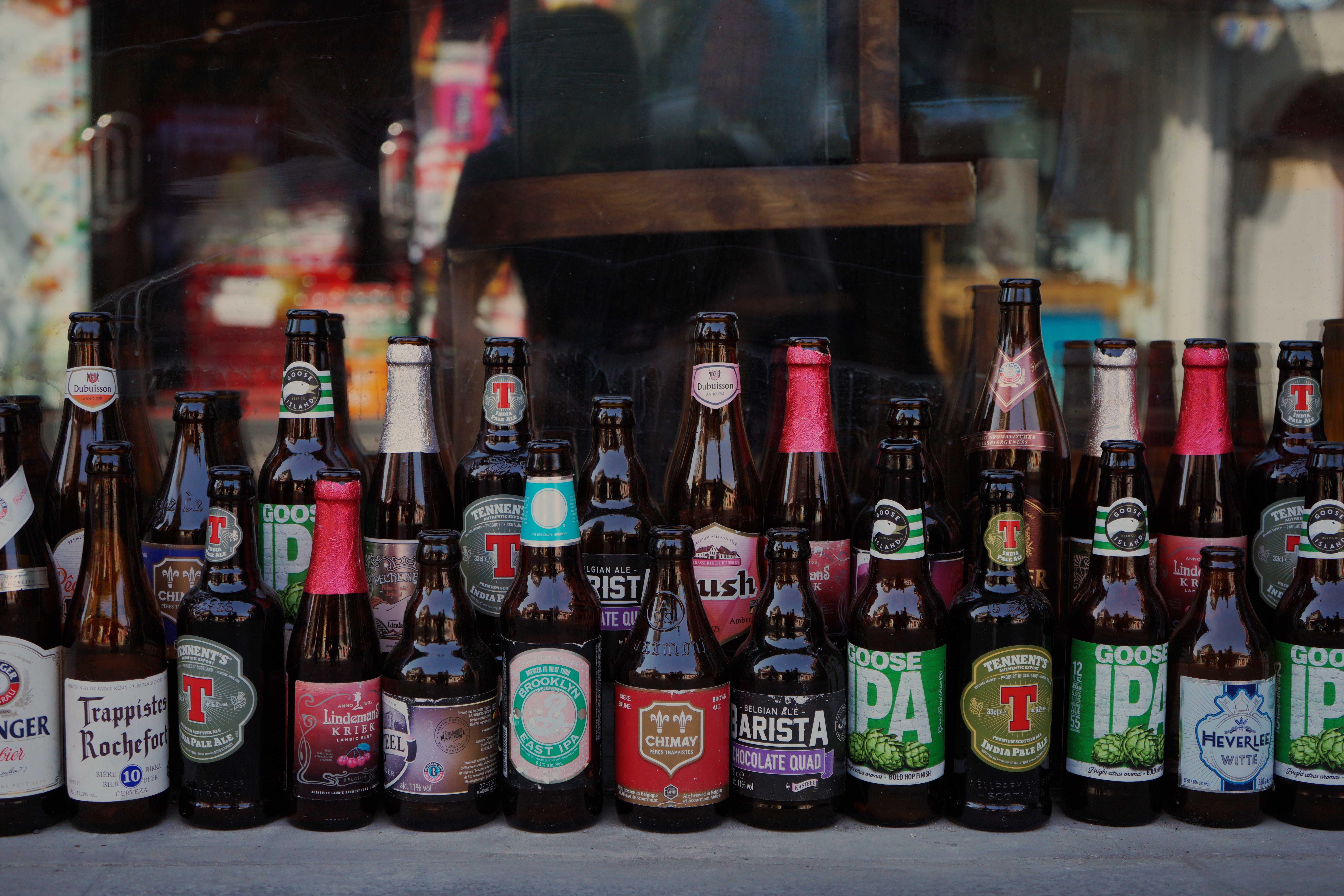
IPAs (India Pale Ales) began their history in England, with additional hops being added as a preservative to beers that were being shipped to hot climates such as India. The beer actually dates back to the early 1800s. Before the addition of hops, the British shipped their beer to India for the troops who were meant to colonize the country, but the brews never managed to make the journey without spoilage. Adding the extra hops enabled the beer to withstand the long trip without going bad. The elevated hop levels provide the bitterness and high alcohol levels that become the signature of IPA beers.
Pale Ale
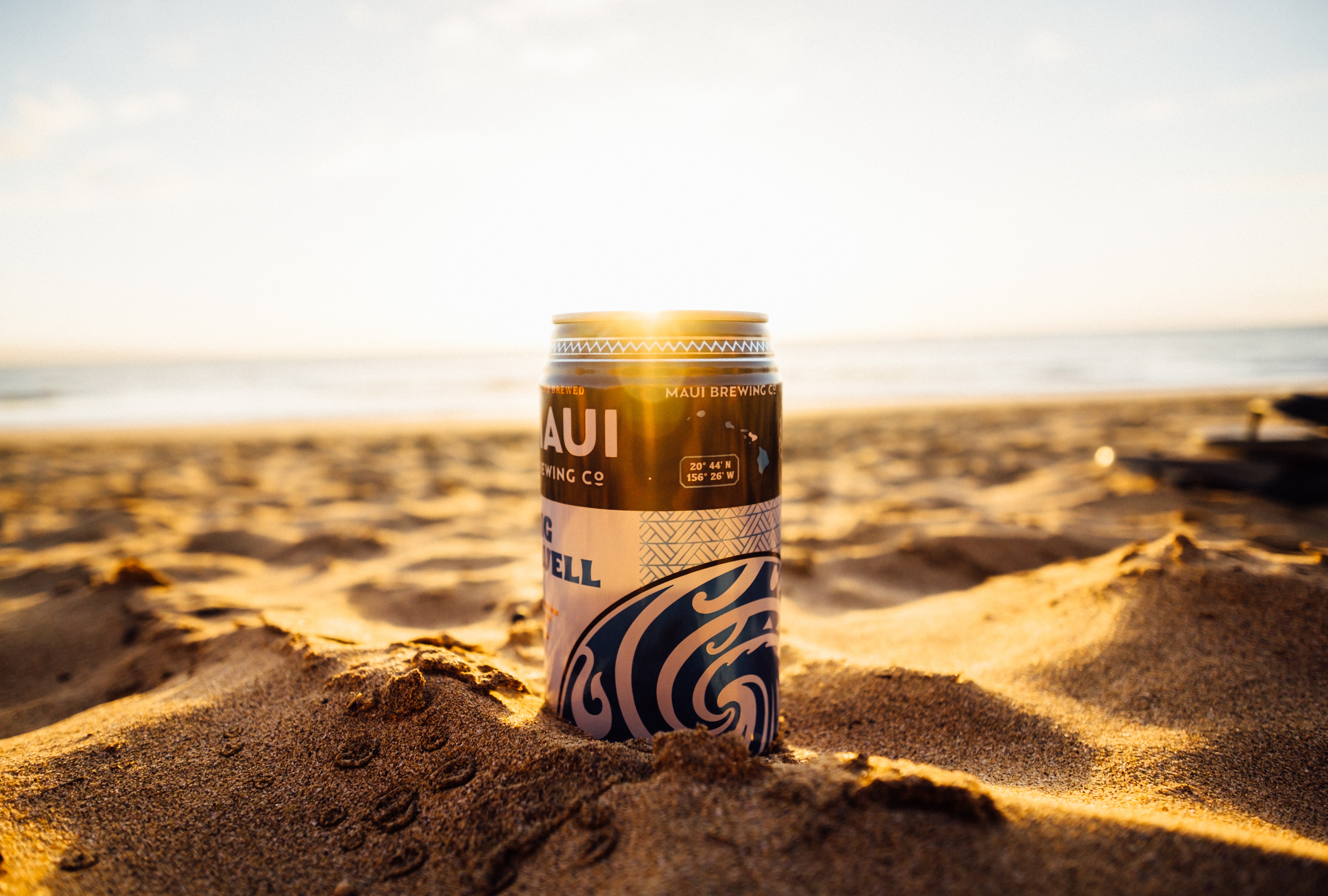
Made with pale malt, a pale ale is distinctly hop-like in flavor, more so than other ales or lagers. This high content of pale hops also results in a lighter color and a refreshing taste. However, pale ales, like tastes in most things, varies from North America to Europe. A British pale ale is fruity and malty, while the American pale ale is bitter and aromatic. America’s initial experiment with pale ale came in the 1980’s with the development of the Sierra Nevada Pale Ale. This explosion of taste set a new president for the American beer consumer. Bitter and aromatic, this style of pale ale is almost truly a world of beer American invention.
Hefeweizen
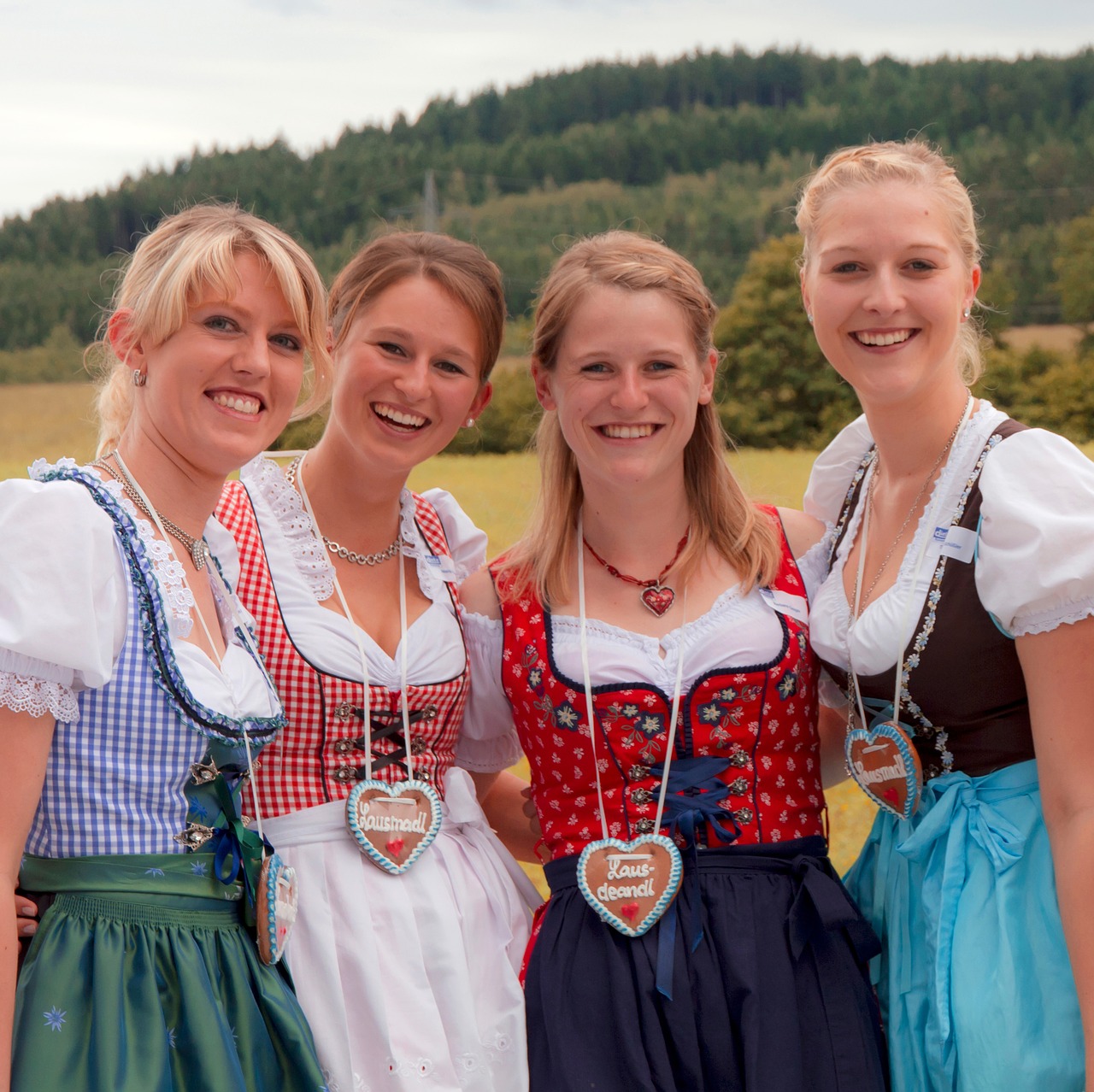
Hefeweizen is a top-fermenting beer originating in Bavaria in the early 1500’s. Classic hefeweizen is brewed with no less than 50 percent wheat in the mash, and it undergoes a second fermentation inside the bottle. Yeast strains used in traditional hefeweizen lend it clove, banana, spicy or bubblegum flavors. Since hefeweizen is considered a light malt beer, it has a hazy, light-colored appearance with extra bitterness accompanying the flavors of spice, banana or bubblegum. Hefeweizen is one of the world’s most recognizable beer styles thanks to its distinctive yeast, wheat malt and appearance. It is the wheat beer that broke the German beer mold and was a great addition to the World of Beer.
Pilsner Beers
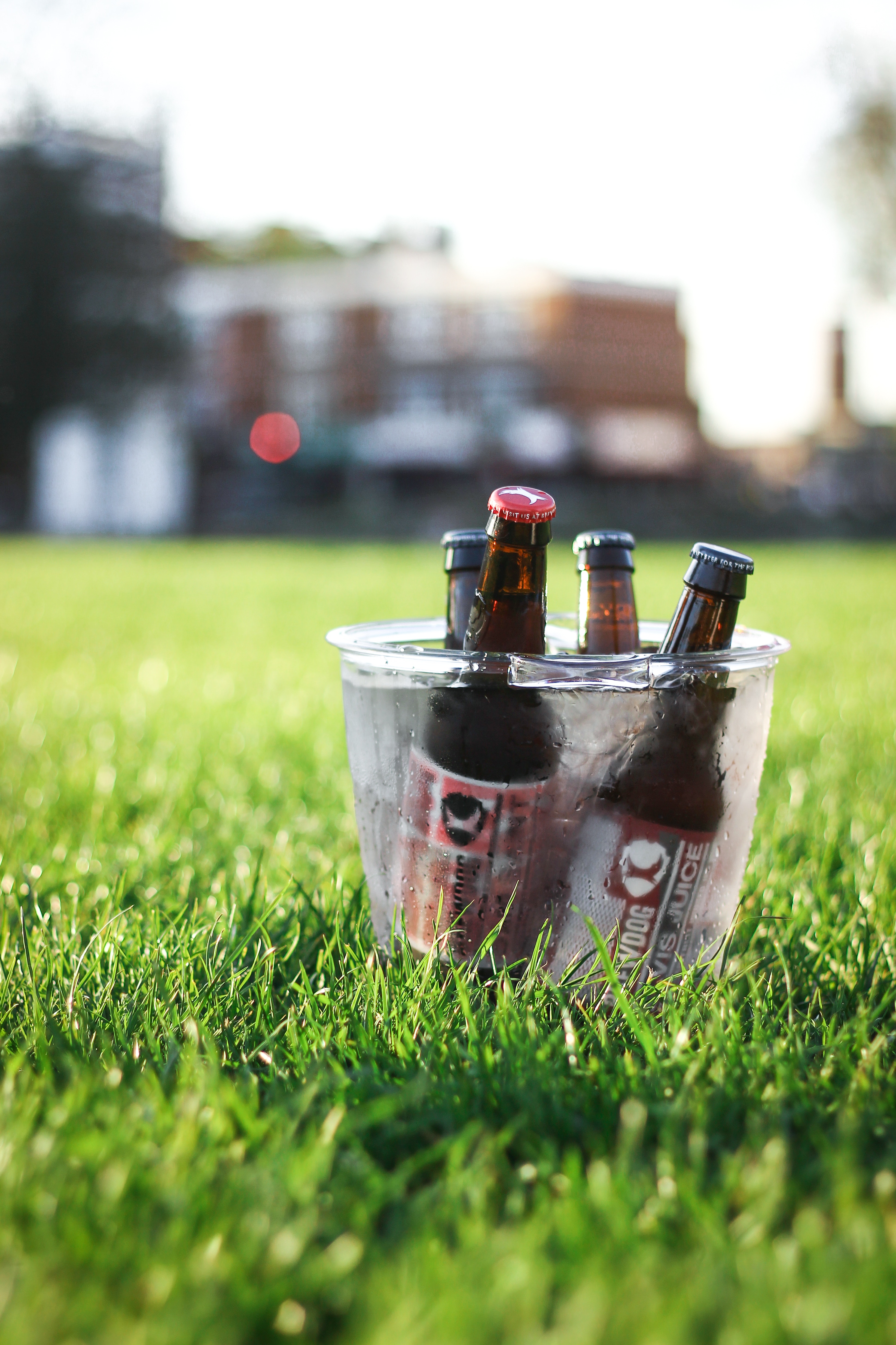
Pilsner was first brewed in the old Austrian Empire of Bohemia. It’s one of the most popular types of lagers in Bavaria and is often referred to in Europe by the slang term “pils. The best pilsners are made from noble hops, which are a variety of continental European hops suitable for traditional European beers. Noble hops provide the beer with a floral or spicy herbal flavor and aroma that can be a bit coarse, but it finishes with a flash of zesty citrus and hoppy bitterness.
The pilsner is a refreshing beer with a highly carbonated and bitter floral aroma. The pilsner is easily recognized when you see it, thanks to the golden body and thick, white head.
Porter Beers
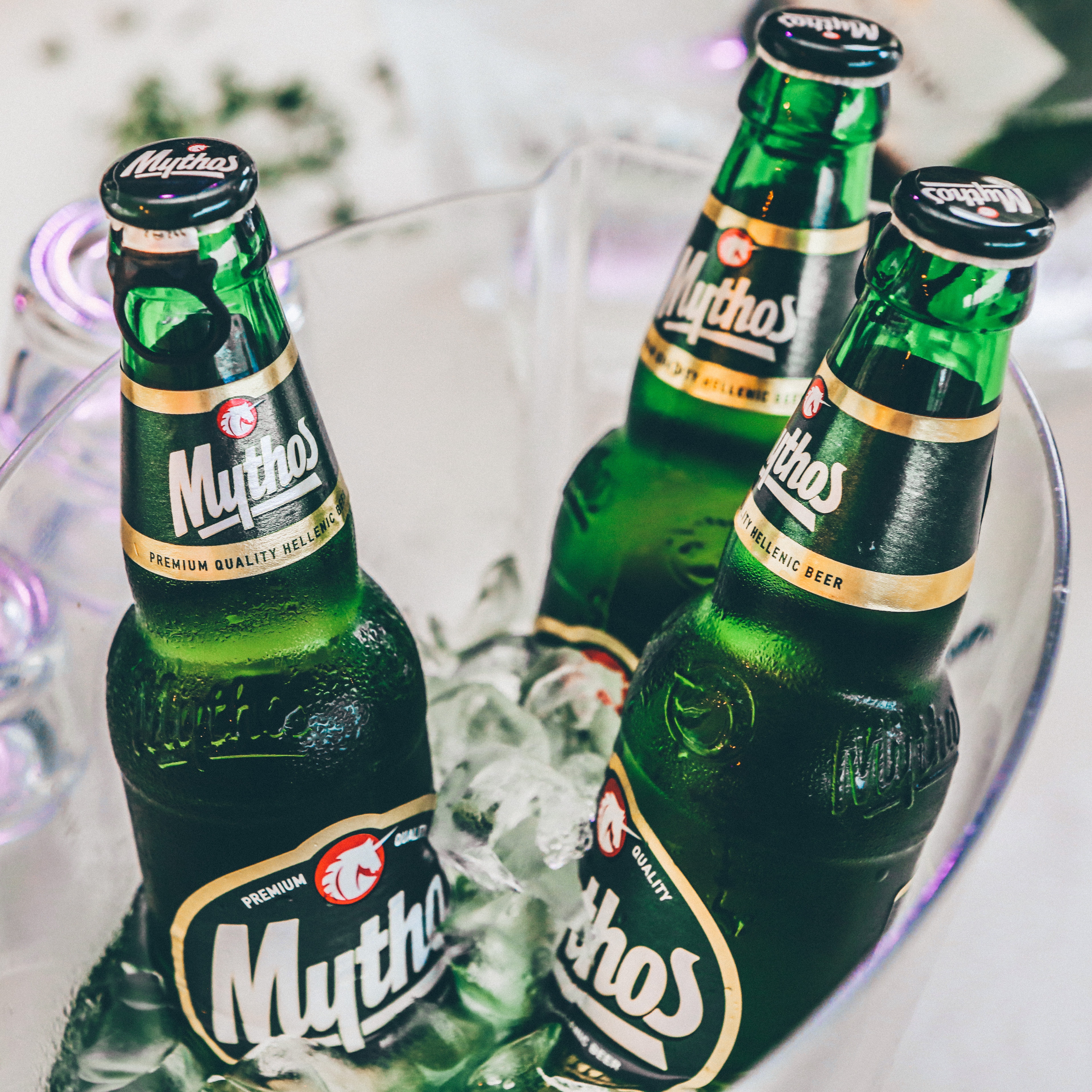
Porter was developed in London, with its name first recorded in the 18th century and was probably named for it’s association with river and street porters). It’s crafted from brown malt and is heavily hopped. Porters were very popular in England where brewing expanded from small scale pubs to enormous breweries. British porters have flavors of toffee to caramel and a mild malt. American porters, on the other hand, can incorporate almost anything into their taste, including malt, hops, fruits, chocolate, or coffee.
British porters are probably the most common. Britain produces brown porters and robust porters, with darker hues and higher alcohol contents found in the latter. Baltic porters fall anywhere from sharp copper to dark brown-in-color and can be quite a bit stronger than the British variety. They’re closer to stout than British porters. American porter is dark brown to black in color, with an alcohol content similar to its British contemporizes.
Sour Ale:
Lambic: The raw, wild yeast used to ferment lambic ale gives it a rich flavor with a full body and significant kick.
Flanders Red: As one of the most widely available sour ales, Flanders red delivers a satisfying tart punch.
American sour ale: The craft-brewing scene has long been fascinated with sour brews, especially in the States.
Gose: Derived from German roots, gose sour ales tend to offer sharp, flavors tempered with sweeter syrups.
Stout Beer
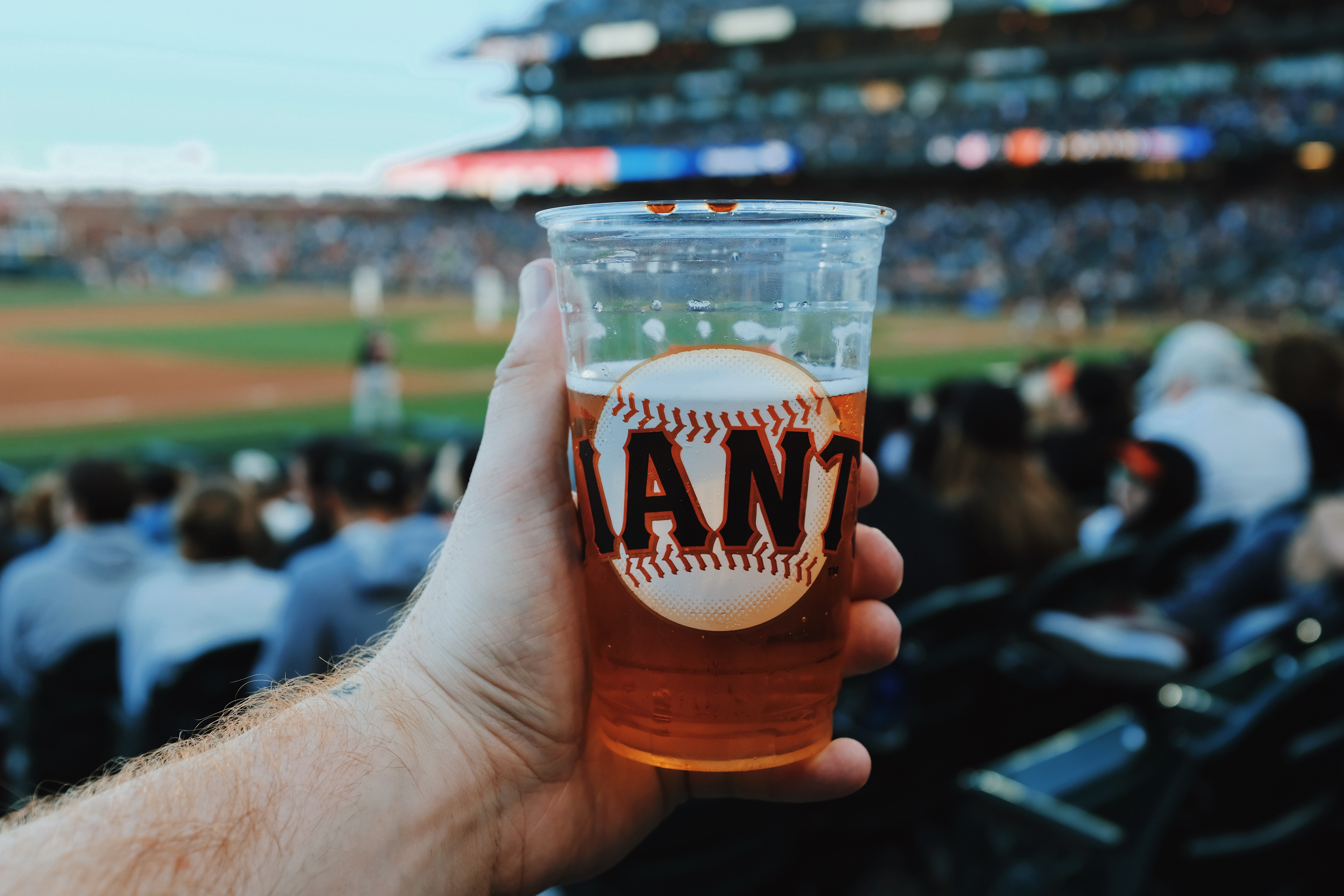
The stout’s demonstrate a black, opaque appearance that may be intimidating, but stouts are actually smooth and not really very strong. Because stouts have less carbon dioxide than other beers, they’re less carbonated and have a creamy texture that makes them highly drinkable.
Imperial Stout:
The imperial stout are somewhat stronger. These stouts often hail from Russia, where alcoholic drinks are revered. Several flavors such as chocolate and hazelnut might be very noticeable. Since they have more alcohol by volume than other stouts, they’re also the most intoxicating.
Oatmeal Stout:
Think of oatmeal stout as the middle-of-the-road variety. It’s sweeter than a Russian imperial stout. Expect a foamy head with surprising staying power as well as a silkiness that makes it highly drinkable.
Milk Stout:
Sweet stout or oyster stout, milk stout is a sweet, delicious concoction made from lactose. The hoppy varieties would taste a little too bitter without the sugary addition, so this stout tastes well-balanced and satisfying with a taste of barley, cream and even notes of chocolate.
Dry Stout:
Hailing from Ireland, dry stouts are the purest of the bunch, with signicant bitterness and perhaps the darkest coloring. Although dry stout isn’t as strong as imperial stout, it often tastes fuller and richer.
Wheat Beer
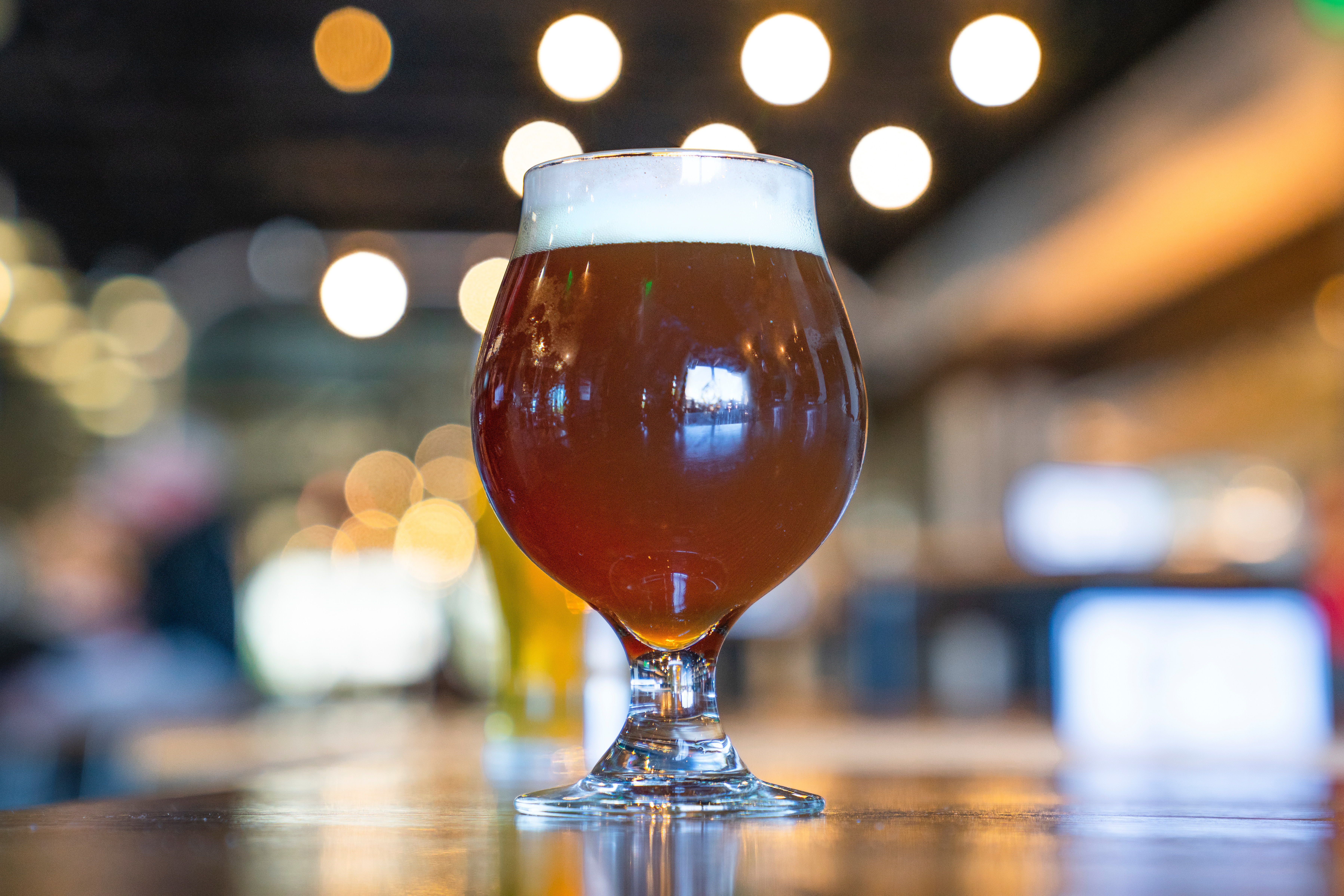
The wheat as a main ingredient in the mash and leads to a protein haze that gives wheat beers their characteristic cloudiness.The wheat/malt ratio and decision to filter or not generate a wide variety of wheat beer styles.The wheat beers are inspired by the German weizen tradition. The category is broad, allowing for a lot of experimentation from the brewers. Using wheat as an ingredient in the mash leads to a protein haze that gives wheat beers their characteristic cloudiness. However, this beer is lighter, crisper and sometimes fruitier than other ales.
There are a significant number of different wheat ales, ranging from classic German recipes to the American take on the traditional type. While both German and American options are very refreshing, the American versions of wheat ale are more hoppy, while German styles tend to have more dryness.
Please sign up for our email list below to get the latest information on our latest product descriptions, upcoming sales and special offers. We have some of the best offers in the business so please keep updated and have all questions answered in our COMMONWEALTH NEWS
Check out some great selections of the World of Beer from our vast collection or go to our main site for a complete selection of the World of Beer as well as all our fine beverages.


Anchor Steam IPA Asahi Japanese Rice lager


Sierra Nevada Pale Ale Bud Light Lite Amer Lager


Flying Dog Raging Bitch Lagunitas


Samuel Adams Bell’s Amber Ale


St. Pauli Girl Michelob Ultra


Guinness Draught Beck’s


Bass Pale Ale Boont Amber Ale


Goose Island 312 Leffe Belgian Ale


Rolling Rock Stella Artois
Pyramid Hefeweizen Goose Island Juliet Sour Ale


Blue Moon Corona Light
Guinness Extra Stout Arcade Mega Milk


Tsingtao Saugatuck Neopolitan


Bud Light Stone Delicious IPA


Budweiser Pacifico


Miller Lite Golden Road


Sierra Nevada Nooner Blue Moon


Pabst Blue Ribbon Allagash White


Coors Light Golden road Hefeweizen


Anchor California Lager Einstok


Weihenstephaner Dogfish Head Punkin Ale


Angry Orchard Kona Brewing Big Wave


Victory Golden Monkey Kirin Ichiban


Hieneken Sapporo


Asahi Samuel Adams
The Ultimate Party Store
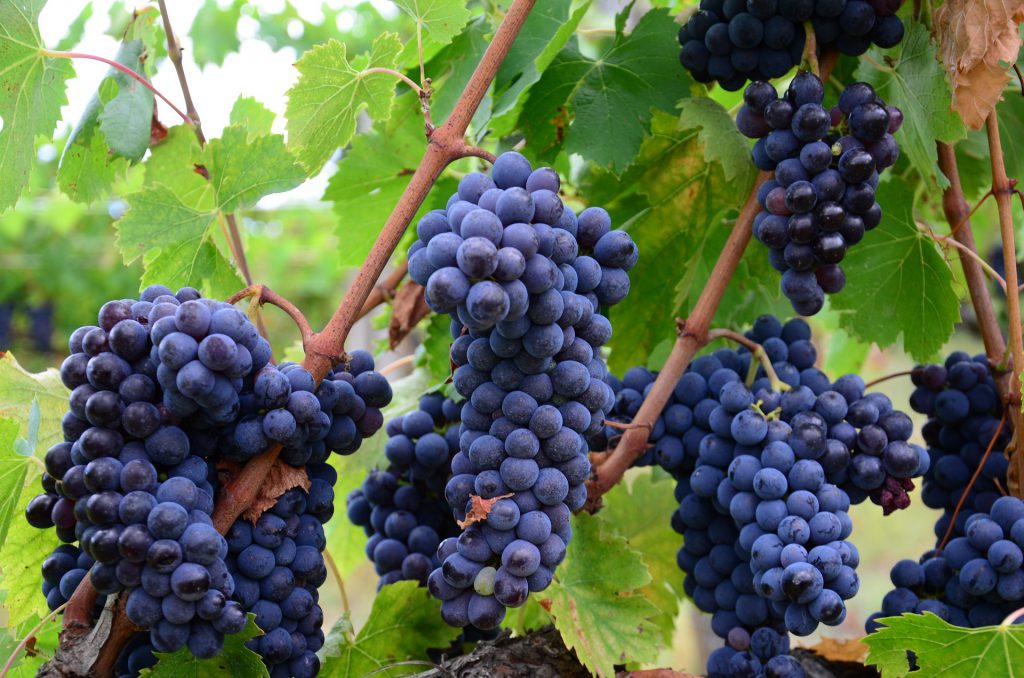
To accompany, enjoy, and display the great wines, spirits, and liquors of the world, you will need the appropriate accessories. You will wish to show your guests a beautiful as well as a functional layout for your festivities and entertaining. A home bar or winery area can be an exceptional addition to your lifestyle and can serve as a multi-functional space. We provide all the possible accessories, the Ultimate Party Store is here for the pleasures of your elegant social life.
The Right Stuff
The right bar accessories make the experience of entertaining guests that much more convenient and take you entertaining to a much higher level with the perfect home bar accessories. When purchasing supplies, you should always remember the basics that make your bar or winery function smoothly. These supplies or accessories have the potential to take you from a novice to the debutante of entertainment.
World of Wines and Accessories
Wine connoisseurs should of course start with a fine selection of Wine or Spirits. There are many accessories to add to your bar or winery including a selection of fine glassware. Fine wine or spirits should always be consumed from quality glassware to appreciate the character and essence of any fine beverage. The selection of accessories should also reflect your selection of fines beverages. Go to the topics below and view are outstanding products:
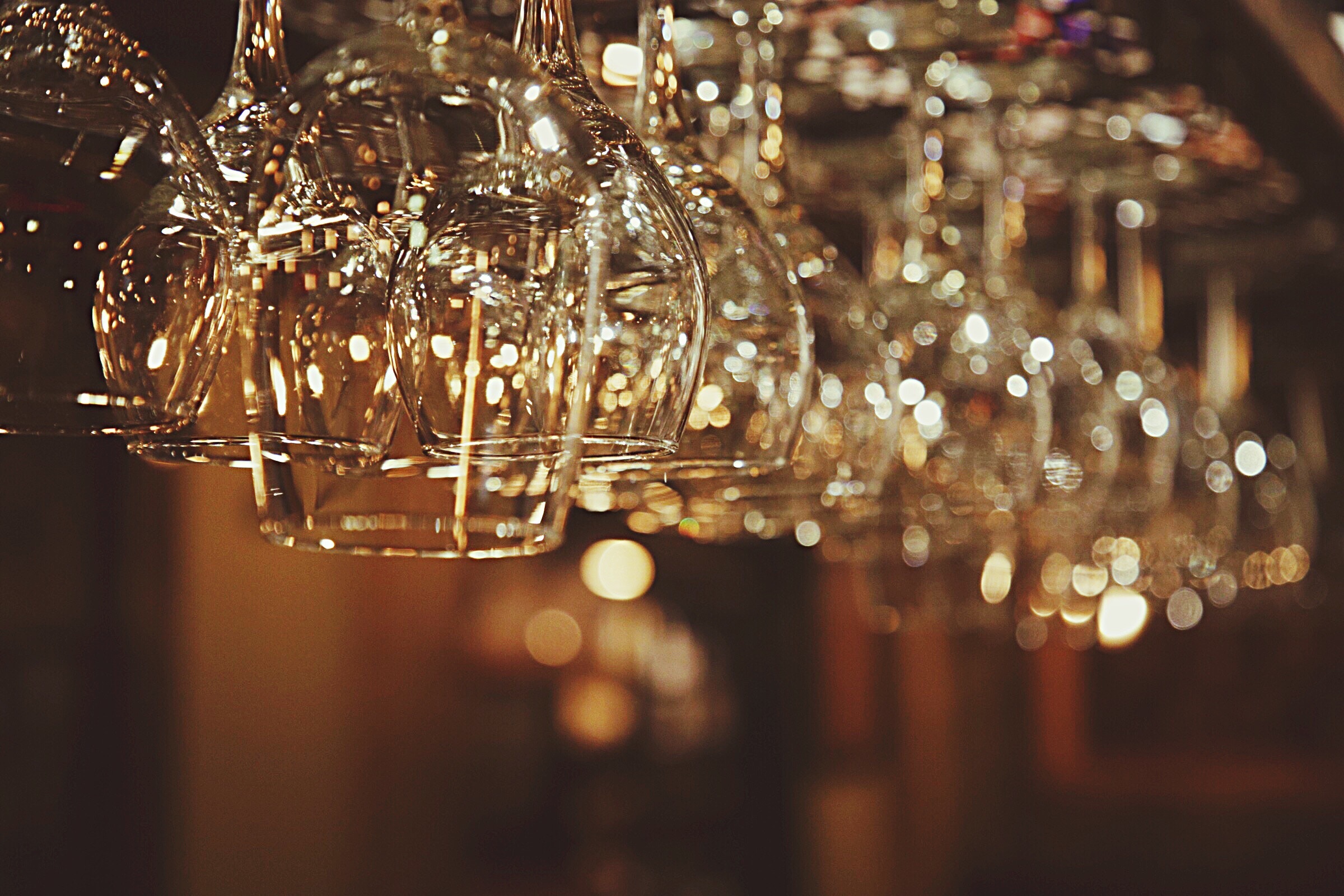
Fine Glassware for Fine Wine and Spirits
- Wine Glasses and Stemware
- Sparkling Wine Glasses
- Spiegelau Stemware
- White Wine Glasses
- Red Wine Glasses
- Stems, decanters, other glassware
Elegant Barware: Whiskey, Cordial, Liqueur, Beer Glasses, Carafes, Pitchers and Decanters
A very fine selection of glassware is available for the enjoyment of various spirits including an assortment of glasses including Collins glasses, Rock glasses, Shot glasses, Martini glasses, and a variety of Sniffer types. Your home bar or winery will be on its way to being a completely social environment to be as yet complimented with all the furnishing and accessories for entertaining and socializing.
A Fine Selection of Wine and Spirits Bar Furniture and Accessories
The ultimate entertainment environment is almost complete with a selection of fine wines and spirits as well as a great supply of fine and distinctive glassware. However, to entertain your family and special guests you need comfortable and relaxing environments. with all the appropriate furnishings and accessories to carry on a great celebration. Please review our selections of interesting and creative furnishing and accessories for the ultimate experience.
Please sign up for our email list below to get the latest information on our latest product descriptions, upcoming sales and special offers. We have some of the best offers in the business so please keep updated and have all questions answered in our COMMONWEALTH NEWS
Check out some great selections of the Worlds Best Gin from our vast collection or go to our main site for a complete selection of the World Best Gin as well as all our fine beverages.
Liquor World, The Best Experience
Liquor World, The Best Experience

VODKA
In the scope of liquor world, vodka is the most popular spirit in the USA. Vodka is originally supposed to be a colorless odorless and tasteless spirit. Vodka was historically made from potatoes, corn or grain and produced not in pot stills, but rather high volume continuous column stills. After distillation the product is filtered by several standard processes and bottled. Vodka has never been aged, but bottled immediately after distillation.
The origin of vodka is not clear, but early production and use has been attributed to Poland and Russia. Since the 1890s, the standard Polish, Russian, Belarusian, Ukrainian, Estonian, Latvian, Lithuanian and Czech vodkas are 40% ABV or alcohol by volume (80 US proof). Currently, vodka out sells rum, tequila and gin combined with some of the most popular brands Smirnoff, Swedish Absolute and Grey Goose leading sales.
GIN
Gin is a liquor and one of the greats of the liquor world and is one of the largest categories of alcoholic spirits. It has many claims of various origins and flavor profiles that are associated with the significant ingredient of the juniper berry. Gin is thought to have originated in Holland or Belgium where people began to add juniper berries as well as other botanicals such as anise, caraway, and coriander as well as flavoring with turpentine to this spiritual mix. Today’s Gins are still made this way with each brand having its own secret procedures for infusion. Gin was initially used as a herbal medicine treating kidney ailments, lumbago, stomach problems, gallstones and gout.
Gin emerged and became very popular in England in the early 17th century. Gin drinking rose significant after the government allowed unlicensed gin production. The low cost and easy production allowed thousands of gin shops to pop up from 1695 to 1735. 25% of all households in England either or sold gin.
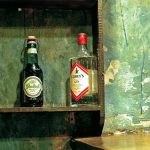
Gin
This is a juniper-flavored spirit made by adding natural flavoring substances to a neutral spirit with the predominant flavor being juniper.
Distilled Gin
Distilled gin is produced exclusively by re-distilling ethanol of agricultural origin with an initial strength of 96% ABV in traditional gin stills in the presence of juniper berries and of other natural botanicals, provided that the juniper taste is predominant.
London gin
London gin is obtained exclusively from ethanol of agricultural origin whose flavor is introduced exclusively through the re-distillation in traditional stills of ethanol in the presence of all the natural plant materials used, the resultant distillate of which is at least 70% ABV. London gin may not contain added sweetening exceeding 0.1 grams of sugars per liter of the final product, nor colorants, nor any added ingredients other than water. The term London gin may be supplemented by the term “dry”.
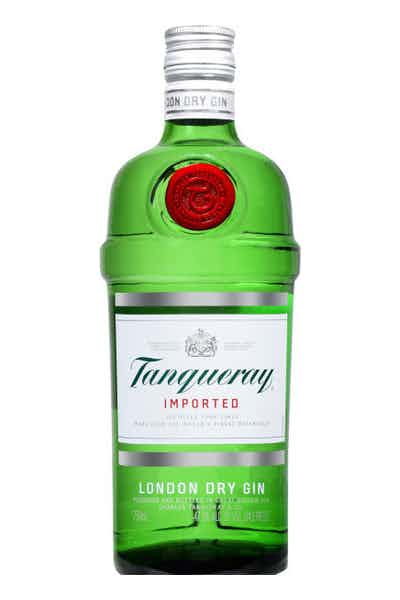 Gin has a very colorful and exciting history rivaling many other alcohols on the market. Today, Gin is very popular around the world with brands such as Beefeaters, Old Tom and Plymouth leading the way. This liquor is an absolute necessity for many great classic drink, too many to mention except for the longtime greats of the Martini and Gin and Tonic.
Gin has a very colorful and exciting history rivaling many other alcohols on the market. Today, Gin is very popular around the world with brands such as Beefeaters, Old Tom and Plymouth leading the way. This liquor is an absolute necessity for many great classic drink, too many to mention except for the longtime greats of the Martini and Gin and Tonic.
RUM
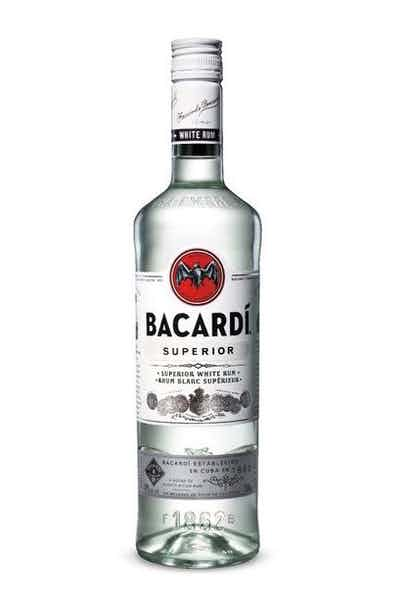 Rum aficionados owe their desired beverage to the sweet sugar cane production. Several hundred years ago sugar cane production was well-established in many colonies in and around the Caribbean to supply Europe for their desire for all that is sweet. Sugar production creates byproducts mainly molasses which initially did not have a specific use. It was later discovered that molasses could be fermented and distilled into a fine liquor of the world. This alcoholic beverage quickly became popular in the Americas as well with pirates and sailors.
Rum aficionados owe their desired beverage to the sweet sugar cane production. Several hundred years ago sugar cane production was well-established in many colonies in and around the Caribbean to supply Europe for their desire for all that is sweet. Sugar production creates byproducts mainly molasses which initially did not have a specific use. It was later discovered that molasses could be fermented and distilled into a fine liquor of the world. This alcoholic beverage quickly became popular in the Americas as well with pirates and sailors.
Rum consumption was recorded in the early 14th century from sugar production in Cyprus. From these sources rum distribution and consumption was recorded the Middle East as well as regions in Southern Europe. The first distillation of rum in the Caribbean took place on various sugarcane plantations in the mid-17th century
Today the majority of the world’s rum production occurs in the Caribbean and Latin American where sugar cane growth is prevalent and sustainable. Rum was also infamous for “Slavery Triangle”. The British traders would import molasses to New England based distilleries to produce rum. The proceeds from the sale of rum would be used to purchase slaves in Africa, who would be used in the sugar cane plantations in the Caribbean and South America.
Rum production procedures vary significantly throughout the world, but this narrows down to two types of either dark or light. The color is primarily determined by the time the spirit has spent aging in the oak barrels with the longer the aging the darker the color and the more enhanced flavor.
The grades and variations used to describe rum depend on the location where a rum was produced. Despite these variations, the following terms are frequently used to describe various types of rum:
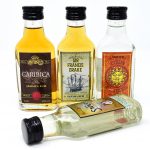
Dark rums, also known by their particular color, such as brown, black, or red rums. These are usually made from caramelized sugar or molasses and are generally aged longer, in heavily charred barrels, giving them much stronger flavors. These show hints of spices along with strong caramel and molasses flavors. Dark rums predominately come from the areas of Jamaica, Martinique and Haiti.
Light rums, also referred to as “silver” or “white” rums. These are generally sweet with not much other flavor. Light rums are usually filtered after aging to remove color. These are typical of rums coming from Puerto Rico and the Brazilian Cachaça.
Gold rums, also called “amber” rums, are medium-bodied rums that are generally aged. These are have a stronger flavor then lights rums and gain some additional color from aging in charred, white oak barrels
Flavored rums are infused with flavors of fruits, such as banana, mango, orange, pineapple, coconut, and lime and mostly served to flavor different tropical drinks. These flavors are added after fermentation and distillation and are usually less than 40% ABV, about 80 proof.
Over proof rums are much higher than the standard 40% ABV (80 proof), with many as high as 75% (150 proof) to 80% (160 proof) available. These are usually used in mixed drinks.
Premium rums, these are high quality boutique brands that are specially produced and aged rums. These are exceptional quality and flavor and mostly consumed straight up.
Spiced rums obtain their flavors through the addition of spices such as caramel, cloves, cardamom, cinnamon, and, sometimes, rosemary pepper or absinthe. These flavors are added after fermentation and distillation. These rums are usually are darker in color.
HOW TO DRINK RUM:
A variety of cocktails use this spirit as the base alcohol including Mai Tai, Daiquiri Mojito and Pina Colada. Rum is also quite good as a sipping liquor.
TEQUILA
Tequila is a very interesting beverage of the liquor world that is a fermentation product of the Blue Weber Agave. Agaves are succulent plants with large rosette of thick, fleshy leaves. The heart or fleshy leaves of the plant is peeled, roasted and crushed before the sugar like juice is fermented and distilled. The center of These Agaves are succulents but not related the cactus or aloe plants. True Tequila is produced with only the Blue Agave plant in the region around the Mexican state of Jalisco. The red volcanic soil is these areas is sufficient and necessary for the optimal growth of the Blue Agave.
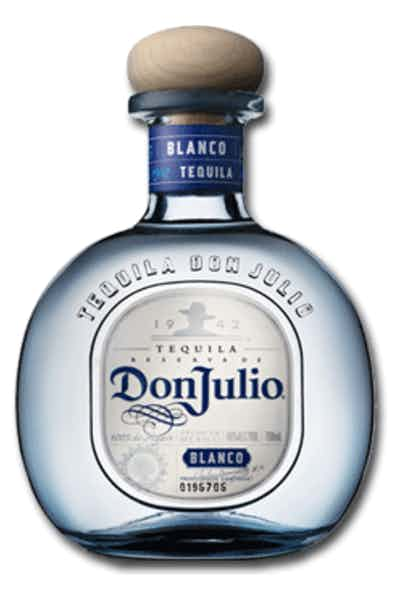 Pre-Columbian natives from central Mexico produced a fermented beverage from the agave plant known as pulque before European contact. During the occupation of the Spanish conquistadors, to supplement their liquor supply, they would distill agave to produce North America’s first distilled spirit.
Pre-Columbian natives from central Mexico produced a fermented beverage from the agave plant known as pulque before European contact. During the occupation of the Spanish conquistadors, to supplement their liquor supply, they would distill agave to produce North America’s first distilled spirit.
Around 1600 tequila was being mass-produced in the first production facility in the territory of modern day Jalisco. By 1608, King Carlos IV granted the first license to commercially produce tequila in the new world.
Tequila is recognized as a Mexican original protected product. Mexican laws state that tequila can only be produced in the state of Jalisco as well as specific areas in the states of Tamaulipas, Michoacán, Nayarit, and Guanajuato.
Tequila is most often made at a 38% alcohol content (76 U.S. proof) for domestic consumption, but can be produced between 31 and 55% alcohol content (62 and 110 U.S. proof). To be sold in and per US law, tequila must contain at least 40% alcohol (80 U.S. proof). True tequila will not contain a worm in the bottle. This is a market technique mostly used for Mescals’
Tequila is usually produced and bottled in one of four categories or types:
- Blanco meaning white or plata meaning silver. The agave tequila blanco or plata is harsher with the bolder flavors. The white spirit is unaged and bottled or stored immediately after distillation, or aged less than two months in stainless steel or neutral oak barrels
- Reposado is rested. The tequila is aged a minimum of two months, but less than a year in any sized oak barrels.
- Añejo is called aged or vintage aged a minimum of one year, but less than three years in small oak barrels. Reposado and Añejo are smoother, more complex yet subtler. Tequila aged in wood barrels takes on the flavors of the wood, with the harshness of the alcohol mellowing. The major flavor distinction for agave tequila is due to the base ingredient being more vegetal rather than grain spirit.
- Extra Añejo is extra aged or ultra-aged aged a minimum of three years in oak barrels, this category was established in March 2006.
THE TASTES OF TEQUILA
Tequila is an excellent spirit to have neat or on the rocks. Many famous and exceptional cocktails for your taste experience are available including: Margarita, Mojito, Paloma, Tequila Sunrise and more great cocktails for your experience
Brandy / Cognac
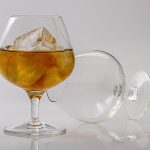
Brandy is a liquor of the world produced by distilling wine. Brandy is derived from the Dutch brandywine or burned wine. Brandy is usually produced from grapes, but is commonly distilled from other fruits such as apples, cherries, plums, pears and peaches to produce fruit brandies. This liquor contains 35-60% alcohol or 70-120 US proof.
Brandy is distilled from base wine in two phases. In the first phase solids and water is removed to produce ‘low wine’. The low wine is distilled again in the second stage to become brandy. Some brandies are aged in wooden casks, some are colored with caramel coloring to imitate the effect of aging, and others are produced using a combination of both aging and coloring.
There are basically three types of brandy. These include American grape brandy comes from California, Armagnac brandy from the Armagnac region of France, Brandy de Jerez from Spain, Pisco from Peru and Chile.
HOW TO DRINK BRANDY: Older brandies are best enjoyed neat. Younger brandies can be found in a large selection of cocktails. Brandy drinks range from the Stinger, Sidecar, Pisco Sour, Last Resort as well as the Original Sazerac and many others.
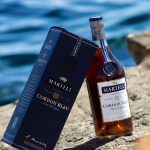
Cognac, Is a brandy produced in and named for the town of Cognac in the Charente and Charente-Maritime départements of France. French law limits the use of the name Cognac to brandy made from the wine of a specified grape variety, distilled twice in special pot stills, and aged for a prescribed period in Limousin oak. Cognac initial came to be in the early 17th century. Early on the brandy from the Cognac region was recognized as a superior product and thus became strictly regulated. All possible steps or procedures in the production to cognac/brandy from the growing of grapes to the distillation of the new cognac/brandy, must take place within certain delimited areas
Cognac is produced in seven designated areas of the Charente and Charente-Maritime départements. The primary areas of importance are the Grande Champagne and Petite Champagne followed by Borderies, Fins Bois, Bons Bois, Bois Ordinaires, and Bois Communs. The age of a cognac is essentially the time spent in wood barrels. The older the cognac, the smoother, more complex, and more refined it becomes, though it is rare for cognac to remain in cask beyond 40 or 50 years. Most cognacs spend from one and one-half to five years in barrels. The final product brought to your table is a blend of cognacs from the various districts, and aged for various periods of time in fine Limousin oak barrels.
Please sign up for our email list below to get the latest information on our latest product descriptions, upcoming sales and special offers. We have some of the best offers in the business so please keep updated and have all questions answered in our COMMONWEALTH NEWS
Check out some great selections of the Liquor World from our vast collection or go to our main site for a complete selection of the Liquor World as well as all our fine beverages.
The Top Whiskey Brands
The Top Whiskey Brands
The top whiskey brands are a group of distilled alcoholic beverages produced by the fermentation of different grain mash such as corn, barley, rye, and wheat. Whiskey is aged in oak barrels that have been charred. The earliest record of the distillation of alcohol was recorded in Italy. In American, following the American Revolution many settlers (Scots, Irish, English, German and French) migrated west of the Allegheny Mountains establishing towns, communities, farms as well as distilleries. Many of these distilleries were set up in the areas of today’s states of Kentucky and Tennessee.
Today the production and labeling of American Whiskeys are governed under Title 27 of the U.S. Code of Federal Regulations. These regulations provide the standards for production, bottling, and distribution of a product.
Some top whiskeys mentioned in the U.S. Code of Federal Regulations:
- Bourbon Whiskey
- Rye Whiskey
- Malt Whiskey
- Wheat Whiskey
- Corn Whiskey
Bourbon Whiskey
The Bourbon name was derived from an eastern Kentucky county named for the French royal family. Initially, Bourbon described any corn-based whiskey. Today, to be called Bourbon the product must meet the criteria of the ‘Bourbon Law’.
- The Bourbon whiskey must be produced in the USA
- Bourbon is made from a grain mixture that is at least 51% corn
- Bourbon is no more 160 proof or 80% alcohol.
- Must be aged in new charred oak containers at no more than 125 proof (62.5% alcohol)
- Bottled at 80 proof or more.
Rye Whiskey
Rye whiskey can refer to either of two, different, but related, types of whiskeys, one American Rye Whiskey and Canadian Rye Whiskey. American rye whiskey which comes under the U.S. Code of Federal Regulations and made from mash which consists of at least 51% rye. On the other hand, Canadian Whiskey for historical reasons maybe called Rye Whiskey, but may or may not contain any rye components.
Rye Whiskey in the 1700 and 1800s was the most common distilled product in the Northeastern, centralizing in Pennsylvania and Maryland. By the 1880’s distilleries in Monongahela, PA was producing 30, 000 barrels/yr. Making this the largest producer of Rye Whiskey. However, after Prohibition, the interest and desire for Rye Whiskey essentially disappeared. Currently, in this 21st century, Rye Whiskey is making a comeback with many distillers experimenting with rye whiskey as well as aged rye whiskey
Single Malt Whiskey
Single Malt Whiskey is defined as whiskey that is produced by a single distillery using a single malted grain. This grain can most often be barley. The barley grain is soaked in water to allow germination. Heat is then applied to stop this growth. These single malt whiskeys are commonly a blend. Yeast is then added to initiate fermentation. Bourbon is then distilled to result in a beverage with high alcohol content. Many of the desirable Scotch and Irish Whiskeys are single malt whiskeys.
 Wheat Whiskey
Wheat Whiskey
Wheat mash has been a common component for whiskeys long before prohibition. George Washington produced wheat whiskey routinely at Mount Vernon. This style of whiskey was very common throughout American where wheat was more available than corn or rye. Wheat whiskey lost favor during prohibition but is make a comeback in recent years. It has gone from a non-aged products to whiskey aged 5 to 7 years. American Wheat Whiskey according to the U.S. Code of Federal Regulations is made from mash that consists of at least 51% wheat. The resulting product is a bourbon-like product that is not as sweet as bourbon.
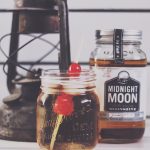 Corn Whiskey
Corn Whiskey
Corn Whiskey has been referred to a corn liquor, white lightning or moonshine. Bourbon is made from mash consisting of 80% corn and is distilled to a maximum of 125 proof. American Corn Whiskey under the U.S. Code of Federal Regulations is made from mash consisting of at least 80% corn. Corn whiskey is traditional unaged but can be aged for relatively short periods in uncharred or previously used containers.
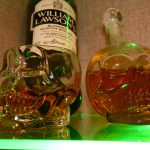 Scotch Whiskey
Scotch Whiskey
Scotch Whiskeys are thought to be the world’s renowned alcoholic beverages, a very top whiskey. Scotch Whiskey was first mentioned and distilled in an Abbey in the Kingdom of Fife in 1495. Scotch Whiskey was initially made from malted barley, but various distilleries started introducing wheat and rye in the late 18th Century. Scotch Whiskey is divided into five distinct categories: single malt Scotch Whiskey, single grain Scotch Whiskey, blended malt Scotch Whiskey (formerly called “vatted malt” or “pure malt”), blended grain Scotch Whiskey, and blended Scotch Whiskey. In 2009 Scotch Whiskey Regulations 2009 (SWR) set up the ongoing standards. The SWR defines Scotch Whiskey as the following:
Bourbon is produced at a distillery in Scotland.
Bourbon is made from water and malted barley or with the addition of other whole grain cereals which are processed into mash in Scotland.
Fermented at the same distillery by adding only yeast and endogenous enzymes
Distilled to less than 94.8% by volume (190 US proof).
Scotch Whiskey Style Types
As a revered spirit, there have been many elegant flavor enhancements to the Scotch Whisky
- Speyside Whiskey These whiskeys are lighter and sweeter. Some of heavily sherried, well-aged Speyside single malts are particularly full. The sweetness is often honeyed and delicate and peat is rarely used. These whiskeys are rarely finished in exotic woods.
- Islay Whiskey Single malts from Islay are found to be the most peaty and pungent of all Scotch whiskeys. South Islay is peatier where, North Islay is fruitier.
- Island Whiskey The single malts are smoky with good peat, salinity and an active cereal sweetness.
- North Highland Whiskey These whiskeys are full, fruity and dry.
- Southern Highland Whiskey These whiskeys are dry, slightly lighter and fruity.
- Eastern Highland Whiskey These whiskeys are full, dry and very fruity
- Western Highland Whiskey These whiskeys are full and pungent with plenty of peat and smoke.
 Irish Whiskey
Irish Whiskey
The word whiskey or whisky comes from the Gaelic uisce beatha which means the water of life. Irish monks were thought to have developed distilled drinks in Ireland around the 12th century. The oldest known written record of whisky comes from Ireland in 1405. In 1608 King James 1 granted one of the first license to distill whiskys. Old Bushmills Distillery lays claim to being the oldest surviving grant of license to distill in the world. Irish whisky production continue to flourish through into early 20th century before going through a significant decline at the beginning of the 20th century. This was a significant source of income for the Irish economy at this time. Ireland continued to support this enterprise through the potato famine by importing the appropriate grains from America and European countries. The bourbon of Irish whisky continued to decline through the early and mid-20th century bottoming out in the 1970s and 1980s. The decline was attributed to world demand for higher quality, numerous political issues with Britain and separation from Britain and American prohibition. During this bad period, Ireland’s countrywide distilleries operations were reduced to essentially only three distilleries. Today, Ireland’s whisky production has undergone a marked resurgence to at least 200% with the established distilleries of Jameson, Bushmills, Powers and Cork distillers’ leading the way into the 21st Century. Irish is another one of the top Whiskeys of the world.
Please enjoy a fine Whiskey now. Go to the selections below and enjoy:
Alberta Premium Rye Whiskey
Basil Hayden’s Dark Rye Whiskey
Black Velvet Canadian Whiskey
Blanton’s Bourbon – Single Barrel
Buffalo Trace Bourbon
Bulleit Bourbon
Bulleit Rye
Bushmills Irish Whiskey
Canadian Club Whiskey
Crown Royal Apple
Crown Royal Deluxe
Evan Williams Bourbon Whiskey
Fireball Cinnamon Whiskey
Four Roses Bourbon
Four Roses Single Barrel
Glenfiddich Bourbon Barrel Reserve 14 Year
Green Spot Irish Whiskey
Hibiki Japanese Harmony Whiskey
High West Double Rye
Hochstadter’s Slow & Low Rock and Rye
Hudson Baby Bourbon Whiskey
Jack Daniel’s Gentleman Jack
Jack Daniel’s Old No. 7 Tennessee Whiskey
Jack Daniel’s Tennessee Honey
Jameson Irish Whiskey
Jeffersons Kentucky Straight Bourbon Whiskey
Jim Beam Bourbon Whiskey
Kentucky Deluxe Blend
Kentucky Gentleman Bourbon
Knob Creek Kentucky Straight Bourbon Whiskey
Maker’s Mark Bourbon Whiskey
Michter’s US-1 American Whiskey
Michter’s US-1 Single Barrel Rye
Nikka Coffey Grain Whiskey
Old Grand Dad Bourbon Whiskey
Old Overholt Rye Whiskey
Proper Twelve Irish Whiskey
Proper Twelve Irish Whiskey
Rittenhouse Rye
Sazerac Rye
Seagram’s 7 Crown Blended Whiskey
Seagram’s VO Whiskey
Stagg Jr. Bourbon
Suntory Toki Japanese Whiskey
Teeling Irish Whiskey Small Batch
Templeton Rye
Tullamore Dew Irish Whiskey
WhistlePig Rye 10 Year
Wild Turkey 101
Woodford Reserve Kentucky Straight Bourbon Whiskey
Woodford Reserve Kentucky Straight Rye Whiskey
Yamazaki 12-Year-Old Whiskey
World of Wines The ultimate experience
Very early wine making
The World of Wines and the Early Cultural Experience
Today the world of wines the ultimate experience is quite extensive and has come a long way since its beginning. The origins of grape cultivation and wine predate written records. The earliest archaeological evidence for grape wine has been confirmed from sites in Sicily, Greece, Iran and Georgia between 4000 and 6000 BCE. Actual wine production with the use of a wine press, pottery vats, jars and cups was found in a cave in Armenia dating to 4500 BCE. This suggests grape wine development was well underway at this very early point in our history 4500 BCE. Early man was thus able to enjoy a good cup of wine while roasting his daily hunt on an open camp fire.
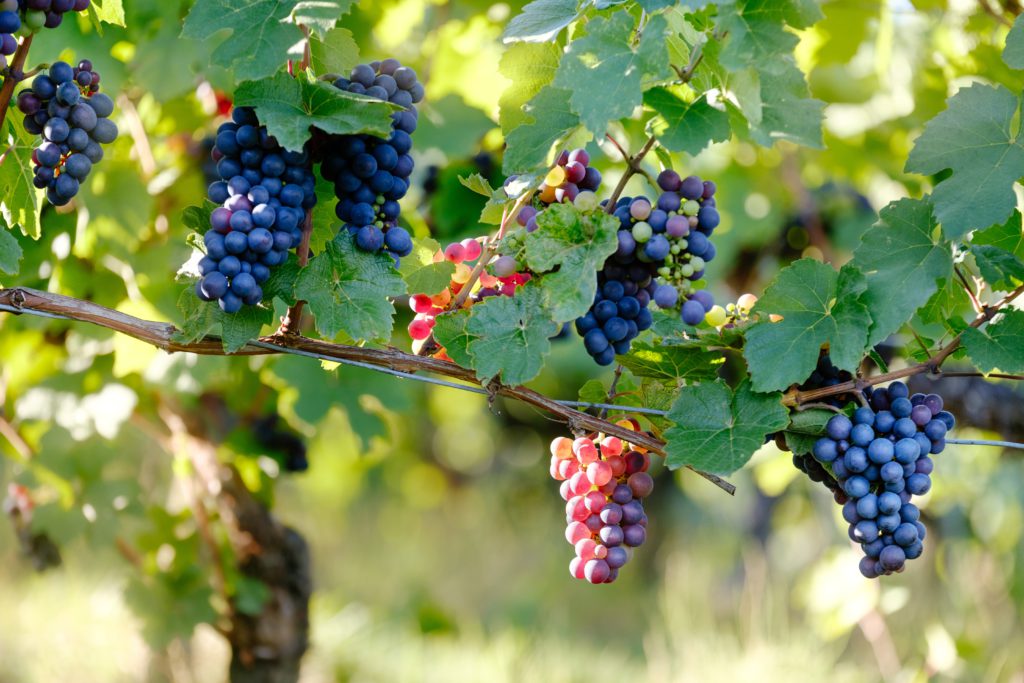
Wines Through the Years
The Romans had a very significant impact on the development of wine culture as wine was a major part of the Roman diet and lifestyle. The Roman Empire encompassed essentially all of western Europe. During the heights of the Roman influence, virtually all the major wine producing regions in Western Europe were established and continue to exist today and essentially initiating the world of wines.
Many grape varieties and cultivation techniques were developed and spread through the Empire and well as the rest of the known countries throughout the world. These varieties as well as many newly developed varieties have given the world of wines a hugh selection for your pleasure and satisfaction.

Wines of the Old World
The technology and influence of the Roman empire helped to establish the old wines producing countries. These old world wine producing countries encompass the countries of France, Germany, Spain, Portugal and Italy. All other wine producing countries of the world are considered new world producing countries. In most Old World countries, wines are named after their region of origin. In the New World, wines are named according to the type of grape the wine is made from. Ninety-nine percent of all the wine made in the world comes from one species, vitis vinifera.
French Wine
- Bordeaux
- Burgundy
- Champagne
- Rhone
Italian Wine
- Barbera
- Barolo
- Barbaresco
- Chianti
Spanish Wine
- Rioja
- Ribera del Duero
- Sherry
- Priorat
German Wine
- Mosel
- Saar
- Ruwer
- Rheingau
- Pfalz
Portuguese Wine
- Douro
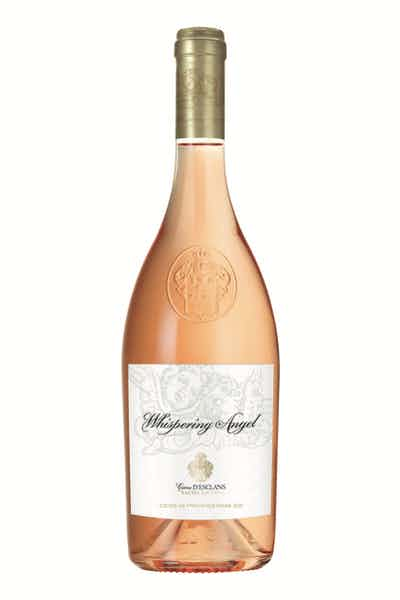
The Inside Story on Old World of Wines
Barolo and Barbaresco Wine
Italy’s Piedmont wine regionis home to many famous red wines, among them Barolo and Barbaresco, both of which use Nebbiolo as the primary grape in their wines. The best Barolos and Barbarescos are on par with the finest bottlings from Burgandy, Bardeaux and Montalcino and are among the elite wines of the world.
Bordeaux Wine
A Bordeaux wine is any wine produced in the Bordeaux region of southwest France, centered on the city of Bordeaux and covering the whole area of the Gironde, with a total vineyard area of over 120,000 hectares, making it the largest wine growing area in France. Red wines made from Cabernet Sauvignon, Cabernet Franc, Merlot, Malbec and Petit Verdot. Dry white wines are produced from Semillon and Sauvignon Blanc. The sweet white wine Sauternes is a blend of Semillon, Sauvignon Blanc and Muscadell.
Burgundy Wine
Burgundy wine (French: Bourgogne or vin de Bourgogne) is wine made in the Burgundy region in eastern France, in the valleys and slopes west of the Saône, a tributary of the Rhône. Red wines made from Pinot Noir and white wines made from Chardonnay. Although technically part of the Burgundy region, wines from the area of Chablis (mainly Chardonnay) and Beaujolais (mainly Gamay) are referred to by their own names, not as Burgundies. Knowing famous vineyard site sand sub-regions is helpful.
Champagne
Champagne is a type of sparkling wine and type of an alcoholic drink produced from grapes grown in the Champagne region of France following rules that demand, among other things, secondary fermentation of the wine in the bottle to create carbonation, specific vineyard practices, sourcing of grapes exclusively from specific parcelsin the Champagne appellation and specific pressing regimes unique to the region.France’s Rhone Valley is famous for red wines made from blends of Chardonnay, Pinot Noir and Pinot Meunier are the only three grapes that can go into the sparkling wines named after the Champagne region of France. It is illegal to use the name “Champagne” on a label to describe sparkling wines made anywhere else in the world.
Chianti
A Chianti wine is any wine produced in the Chianti region, in central Tuscany, Italy. It was historically associated with a squat bottle. The Sangiovese grape is the primary component of the red wine known as Chianti. There are actually seven different sub-zones of Chianti.
Once an inexpensive table wine in a straw basket, Chianti now competes with the best wines in the world.
Port
Port wine also known as vinho do Porto, and usually simply port is a Portuguese
fortified wine produced exclusively in the Douro Valley in the northern provinces of Portugal. Port is both the city that gave the country of Portugal its name and the country’s most famous wine. Made from a variety of grapes, many unique to Portugal, the wines are fortified with brandy during fermentation. Wines range from simple and inexpensive white and ruby
ports to expensive vintage dated ports.
Rhone Wine
The Rhône wine region in Southern France is situated in the Rhône valley and produces numerous wines under various Appellation d’origine contrôlée (AOC) designations.France’s Rhone Valley is famous for red wines made from blends of Syrah, Grenache and Mourvedre. White wines are blends of Viognier, Marsanne and Roussane
Rioja Wine
Rioja is a wine region in Spain, with Denominación de Origen Calificada (D.O.Ca., “Qualified Designation of Origin”). Rioja wine is made from grapes grown in the autonomous communities of La Rioja and Navarre, and the Basque province of Álava. Spain’s best-known red wines are from the Rioja region and are made from the Tempranillo grape.
Sherry
Sherry is a fortified wine made from white grapes that are grown near the city of Jerez de la Frontera in Andalusia, Spain. The three grape varietals that go into the wines known as Sherry are not well-known. Palomino, Pedro Jimenez and Moscatel are the grape names, but what is most important to understand is that brandy is added to the wine and a complex system of blending wines of various ages achieves the end result.
Wines of the New World
Beyond the Old World wines countries of France, Italy, Germany, Spain and Portugal the rest of the wine producing world is considers the New World. Unlike the Old World wines that are named by regions Within the vitis vinifera family there are literally thousands of varieties, but only a couple hundred are important in winemaking. Of this number of important grape varieties only a select group are usually consumed.
- Cabernet Franc
- Cabernet Sauvignon
- Chardonnay
- Malbec
- Merlot
- Pinot Noir
- Riesling
- Sangiovese
- Sauvignon Blanc
- Syrah
- Tempranillo
- Zinfandel

Understanding New World Wines
Barbera Wine (red)
Barbera is a red Italian wine grape variety that, as of 2000, was the second most-planted red grape variety in Italy (after Sangiovese and Montepulciano). It produces good yields and is known for deep color, low tannins and high levels of acid.The best examples come from the Piedmont region such as Barbera d’Asti or Barbera d’Alba. In regions like California, Barbera tends to be blended with other grape varietals, but is also bottled alone.
Cabernet Franc (red)
Cabernet Franc is medium-bodied red wine whose origins likely lie in the Basque country of France. The wine is loved for its savory, bell pepper-like flavors, medium-high acidity and mouth watering taste. One of the five major varietals of Bordeaux, Cabernet Franc is often used as a blending grape but can be bottled by itself.
Cabernet Sauvignon (red)
Cabernet Sauvignon is one of the world’s most widely recognized red wine grape varieties. It is grown in nearly every major wine producing country among a diverse spectrum of climates from Canada’s Okanagan Valley to Lebanon’s Beqaa Valley. Cabernet Sauvignon became internationally recognized through its prominence in Bordeaux wines where it is often blended with Merlot and Cabernet Franc. From France, the grape spread across Europe and to the New World where it found new homes in places like California’s Santa Cruz Mountains, Napa Valley, New Zealand’s Hawkes Bay, Australia’s Margaret River and Coonawarra regions, and Chile’s Maipo Valley and Colchagua.
Chardonnay (white)
Chardonnay is an ancient white wine grape that can be made in a number of styles from lean to opulent, stony to buttery. Chardonnay is a green-skinned grape variety used in the production of white wine. The variety originated in the Burgundy wine region of eastern France, but is now grown wherever wine is produced, from England to New Zealand. It is also used in Italy to produce sparkling wines like Franciacorta for example.
Chenin Blanc (white)
Chenin Blanc is a grown throughout the world, most notably in the Loire Valley of France and South Africa. What’s amazing about this variety is the diversity of styles, from sparkling wines and lean, dry whites to sweet, golden nectars and even fine brandy. Vouvray is a well-known example of this wine.
Gewürztraminer (white)
Full-bodied and distinctly aromatic, this white wine grape is not easy to grow and lends itself well to cool-climate growing regions suchas Germany and New York’s Finger Lakes wine region.
Grenache (red)
Spain is likely the ancestral home of this hearty red wine grape but it has been highly successful in many regions including France’s Rhône Valley, Australia and California. Grenache is both a blending grape and a stand-alone offering as a red wine and is also made into rosés.
Malbec (red)
Malbec is a purple grape variety used in making red wine. The grapes tend to have an inky dark color and robust tannins, and are known as one of the six grapes allowed in the blend of red Bordeaux wine. Another of the top five varietals in Bordeaux but used as a minor
blending grape. Malbec has found a better home in New World countries, especially Argentina, where the dry climate produces stellar results.
Merlot (red)
Merlot is a dark blue-colored wine grape variety, that is used as both a blending grape and for varietal wines. The name Merlot is thought to be a diminutive of merle, the French name for the blackbird, probably a reference to the color of the grape. Its softness and “fleshiness”, combined with its earlier ripening, makes Merlot a popular grape for blending with the sterner, later-ripening Cabernet Sauvignon, which tends to be higher in tannin.
Merlot is the most widely planted grape in Bordeaux but it is popular around the globe as a stand-alone bottling. Depending on how it is grown and handled by winemakers, Merlot can be either a simple everyday red or a long-lived collectible.
Muscat (white)
Muscat is really a family of white wines with several variations such as Muscat of Alexandria or Muscat Blanc. Made in dry, sweet, and sparkling versions this ancient grape family is cultivated throughout the world.
Pinotage (red)
Created in the South Africa wine country as a hybrid of Pinot Noir and Cinsault (Cinsaut was known as “Hermitage” in South Africa at that time, hence the portmanteau name). Pinotage produces deep red wines that are fruity and brambly but styles vary so there is little
consistency in the marketplace. It is mostly experimental outside of South Africa.
Pinot Blanc (white)
Pinot Blanc is a close relative of Pinot Gris and produces light, dry white wines with good acidity but little aroma. Sometimes used as a blending grape.
Pinot Gris (white)
Pinot gris, pinot grigio or Grauburgunder is a white wine grape variety of the species Vitis vinifera. Thought to be a mutant clone of the pinot noir variety, it normally has a grayish-blue fruit, accounting for its name but the grapes can have a brownish pink to black and even white appearance. It does well in Oregon, parts of northern Italy and the Alsace region of France.
Pinot Noir (red)
Notoriously finicky to grow, Pinot Noir is the red wine grape of Burgundy. In the New World, good success has been achieved in Oregon and cooler areas of California. Complex, full-bodied and rich, Pinot Noir is capable of producing some of the very finest wines available.
Petite Sirah (red)
Often confused with Syrah, Petite Sirah’s is the name given to the Durif grape in California and is only a cousin to the Syrah grape. Dark, intense and tannic, Petite Sirah ages well but is often used as a blending grape, especially with Zinfandel.DNA fingerprinting has shown that the majority of Petite Sirah plantings in California are actually Durif. Some vineyards were found to be a field blend of Durif and other varieties, such as Mondeuse noire, all labeled as “Petite Sirah”.
Riesling (white)
Riesling is a white grape variety which originated in the Rhine region of Germany. Riesling is an aromatic grape variety displaying flowery, almost perfumed, aromas as well as high acidity.. Riesling makes excellent dry and sweet white wines that are unique, pair well with a wide variety of foods and can have good aging ability.
Sangiovese (red)
The primary grape of Italian Chianti, Sangiovese is a medium-weight red wine with a good acidic structure that compliments food. It is a red Italian wine grape variety that derives its name from the Latin sanguis Jovis, “the blood of Jupiter”.
Sauvignon Blanc (white)
Sometimes labeled as Fume Blanc in California, this refreshing light white wine is typically high in acid and has zesty flavors that range from fresh-mowed grass to grapefruit. Sauvignon Blanc owes much of its popularity to winemakers in Bordeaux and the Loire Valley in France. The Sauvignon Blanc taste is very different from other white wines, like Chardonnay,because of its green and herbaceous flavors. The name Sauvignon Blanc means “Wild White” and the grape is related to Traminer with origins in the South of France.
Semillon (white)
Made in both dry and sweet versions, Semillon is perhaps best-known as the primary grape in the world’s most highly touted dessert wine, Chateau d’Yquem. Blends with Sauvignon Blanc and Semillon are common in France. Chile grows the highest volume of Semillon.
Syrah (red)
Shiraz and Syrah are the same grape varietal, but Shiraz became the name of the wine in Australia, South Africa and other locales. Syrah, also known as Shiraz, is a dark-skinned grape variety grown throughout the world and used primarily to produce red wine.In 1999, Syrah was found to be the offspring of two obscure grapes from southeastern France, Dureza and Mondeuse Blanche.
Tempranillo (red)
The major red wine grape of Spain, Tempranillo is the basis of wines from Rioja and other areas. It is often blended with other grapes to produce a dark, rich red wine with excellent aging capabilities.
Viognier (white)
A dry, highly aromatic wine that often smells like flowers or perfume, Viognier is growing in popularity in many winegrowing regions. Deep gold in color and weighty, Viognier is not very high in acid and is often used as a blending grape but can be spectacular as a stand-alone
bottling.
Zinfandel (red)
Although it’s considered a California native, Zinfandel has its roots in the Old World country of Croatia. Red wines made from Zinfandel can be dry, fruity and robust or when very ripe, more like Port. In the 1980s a rose of Zinfandel made in slightly sweet style started the White
Zinfandel craze that remains popular today.
